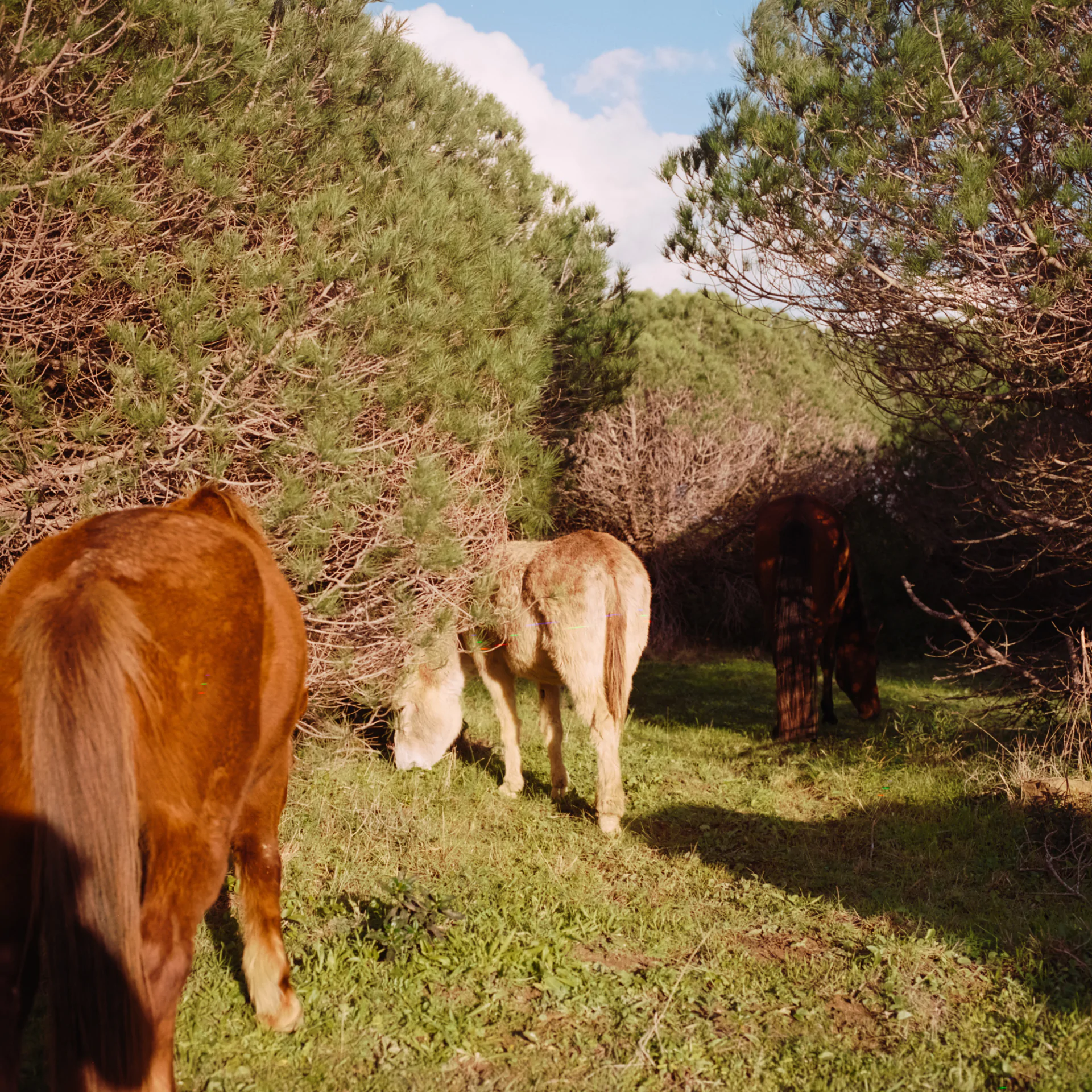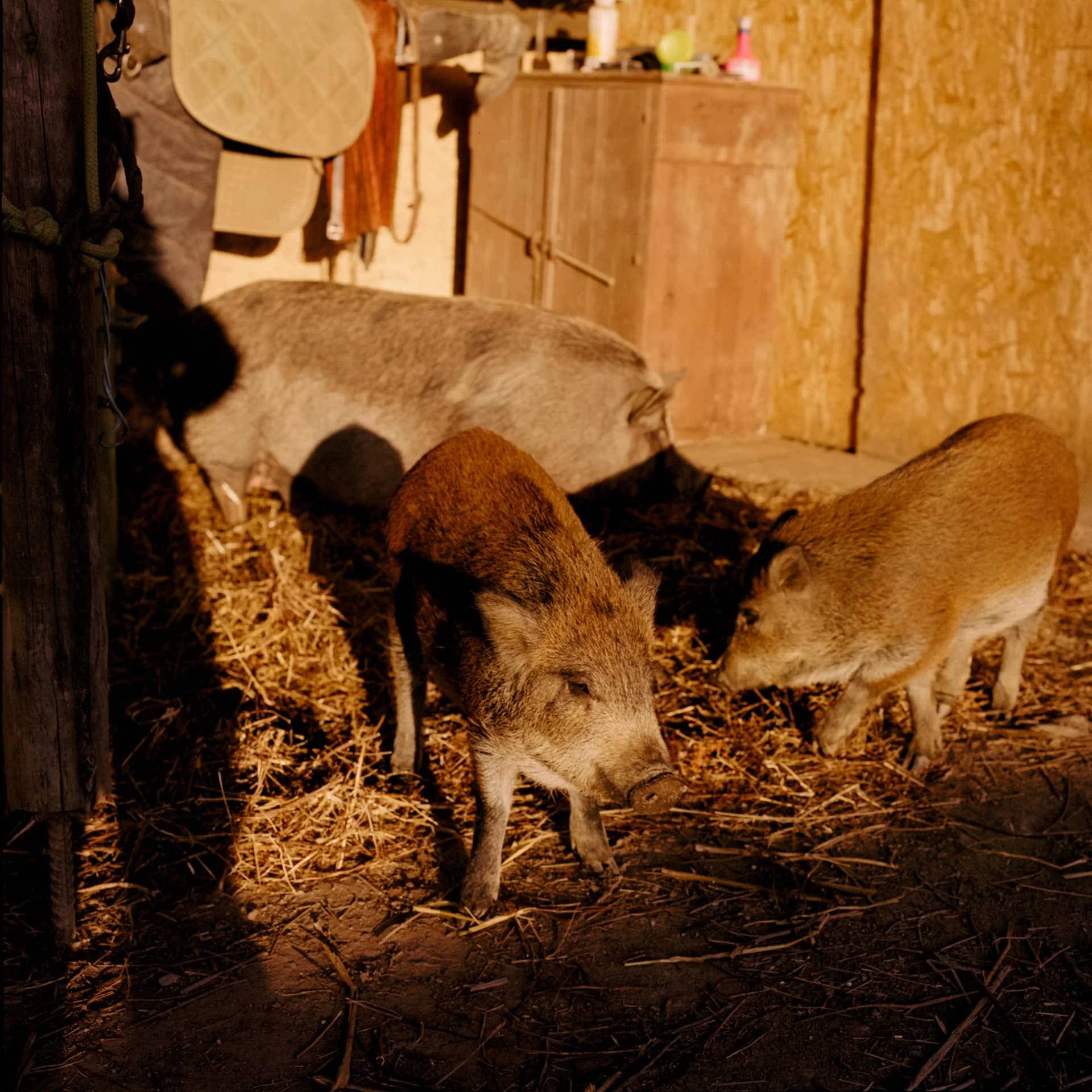Top Tips and Advice for Freelance Photographers
Portugal’s Housing Crisis for Die Zeit
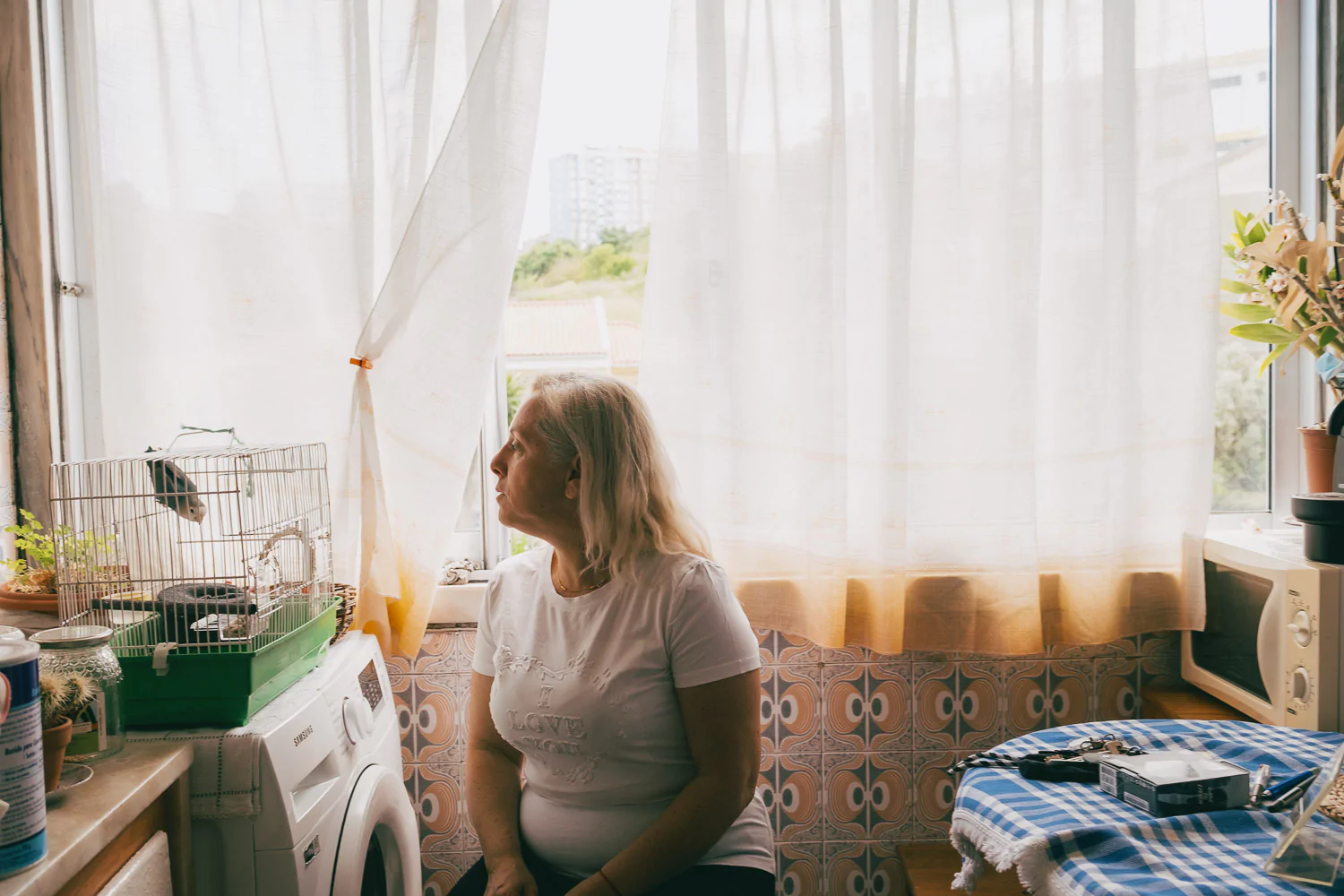
I met Amelia at her home, in the outskirts of Lisbon. Antonia has already began interviewing Amelia about the difficulties she’s facing due to using market pressure, being a single mother, and a stagnant career as a teacher.







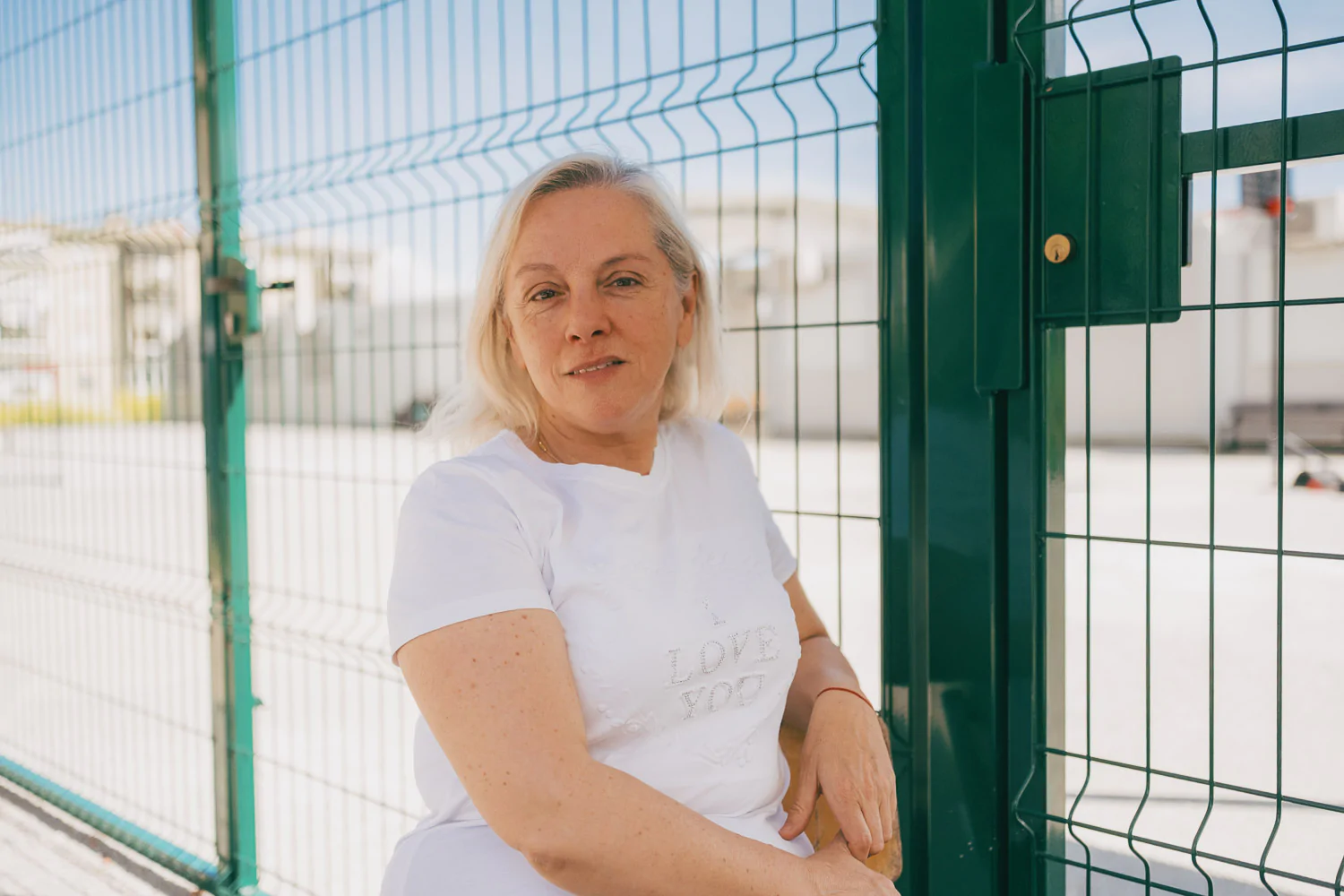
The Albuquerque Foundation: Ceramics Museum Photography for Financial Times’ HTSI | Matilde Viegas

Recent photography work for the Financial Times’ HTSI, published in February 2025.
The feature article showcases the Albuquerque Foundation in Sintra, Portugal, a family estate transformed into a ceramics museum. I photographed Brazilian-born Mariana Teixeira de Carvalho, who has spearheaded the transformation of her grandfather’s holiday home into an arts destination housing his world-class collection of Chinese ceramics.
The assignment allowed me to document both the stunning architectural contrasts of the property—where a modern glass structure meets a historic terracotta-hued villa—and capture intimate portraits of Teixeira de Carvalho within the space. I also had the privilege of photographing select pieces from the collection, including rare Qing-dynasty works.
You can view the full article here.
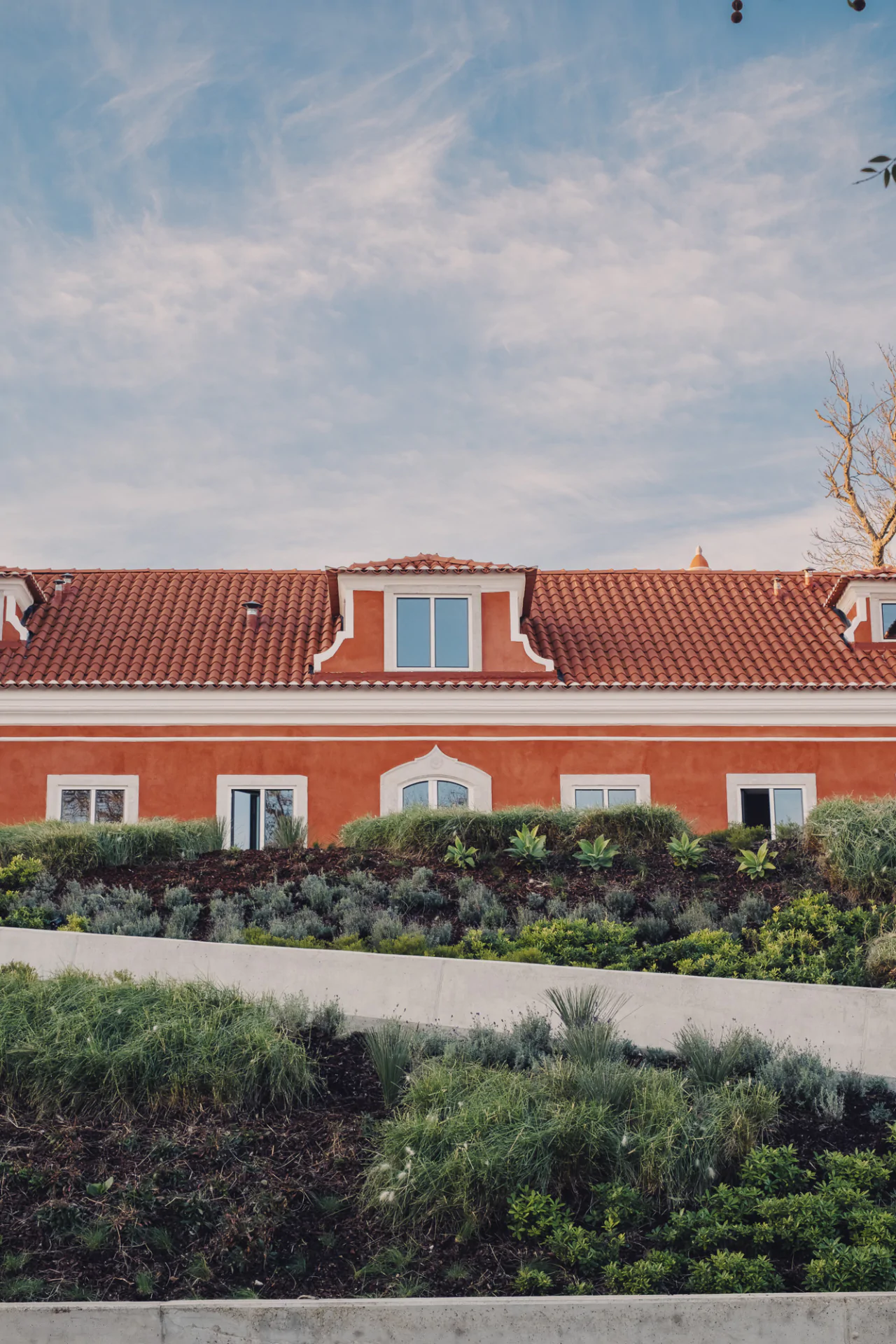
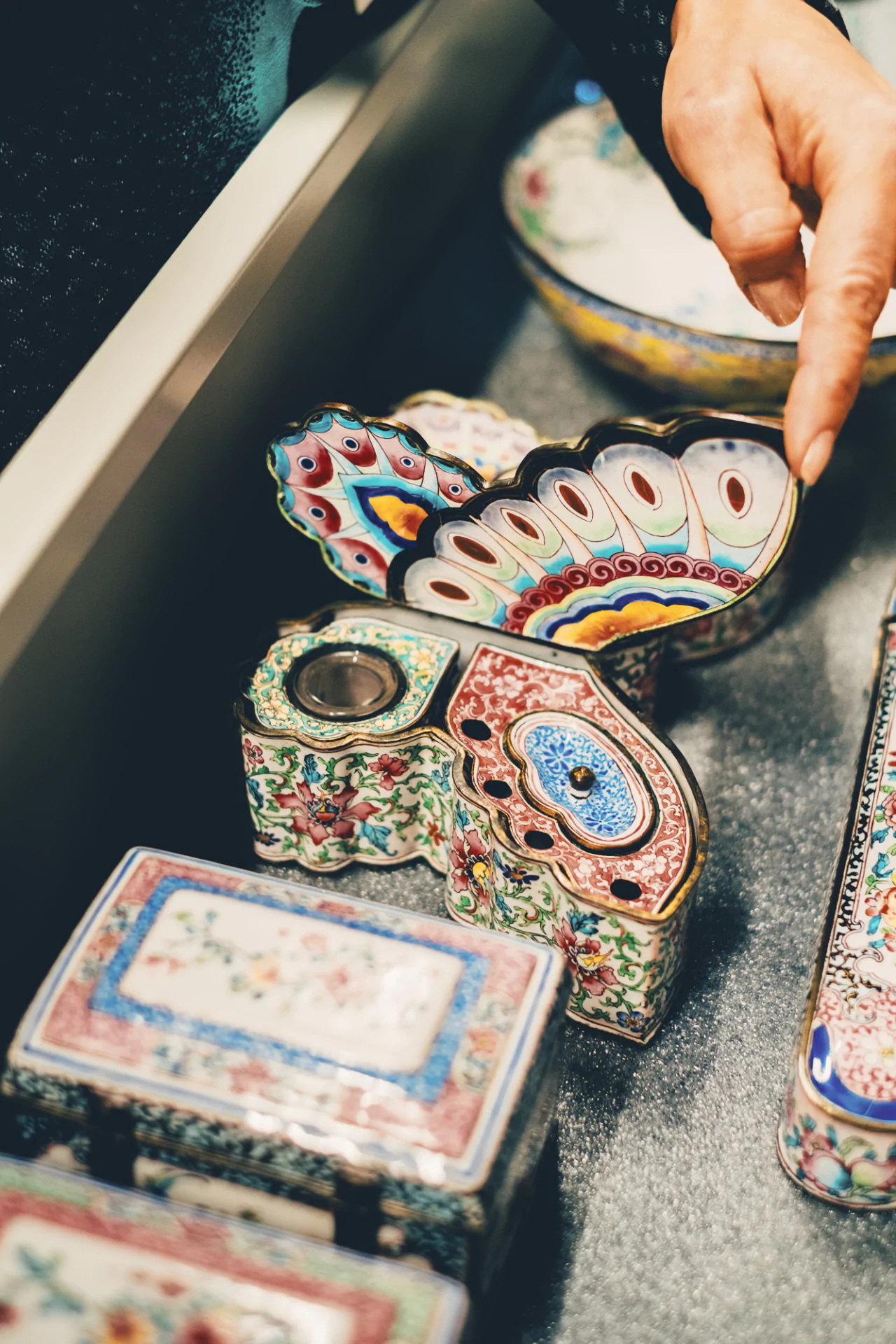

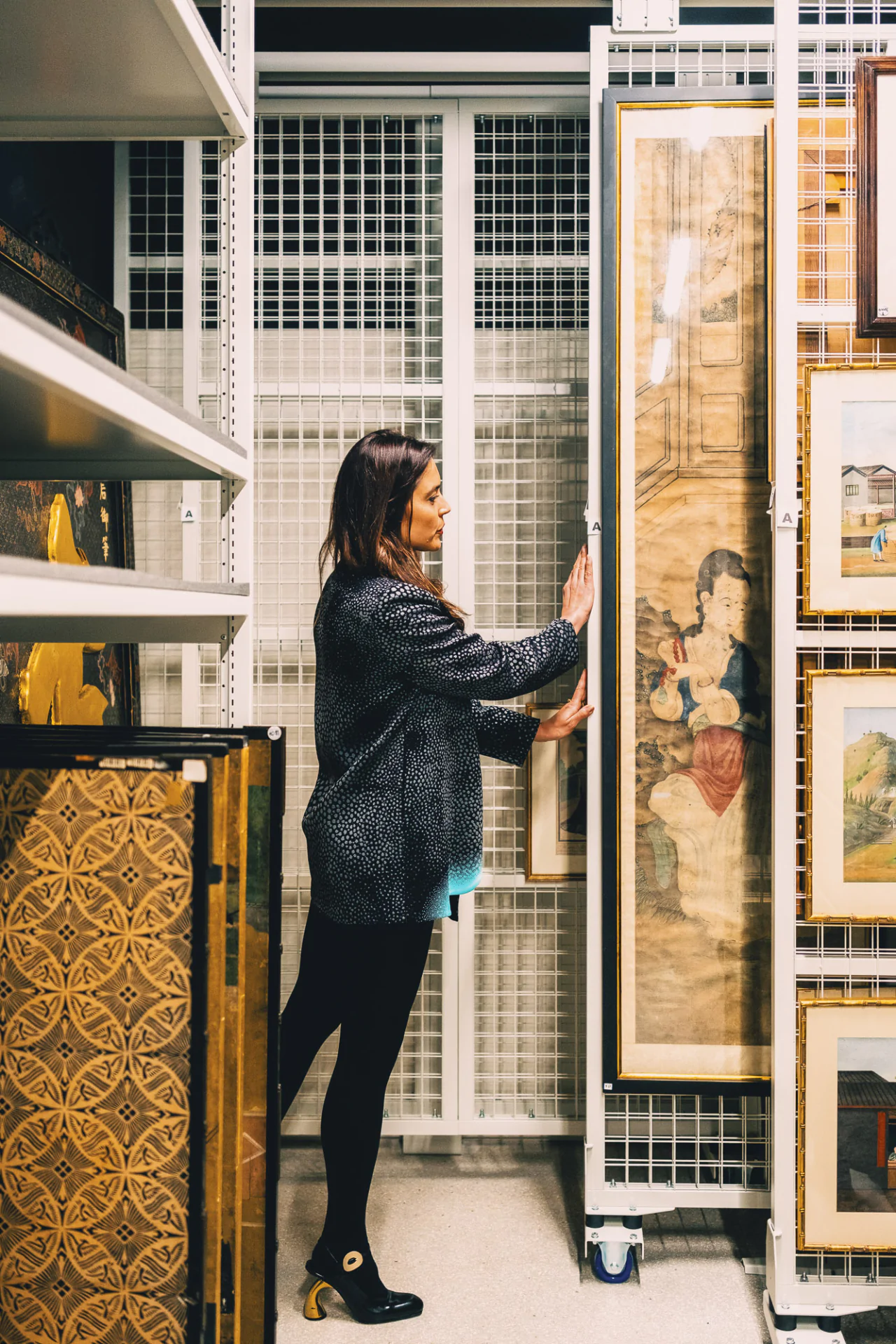

Tinhela 610, a hidden retreat in Northern Portugal, for M Le Magazine du Monde | Matilde Viegas
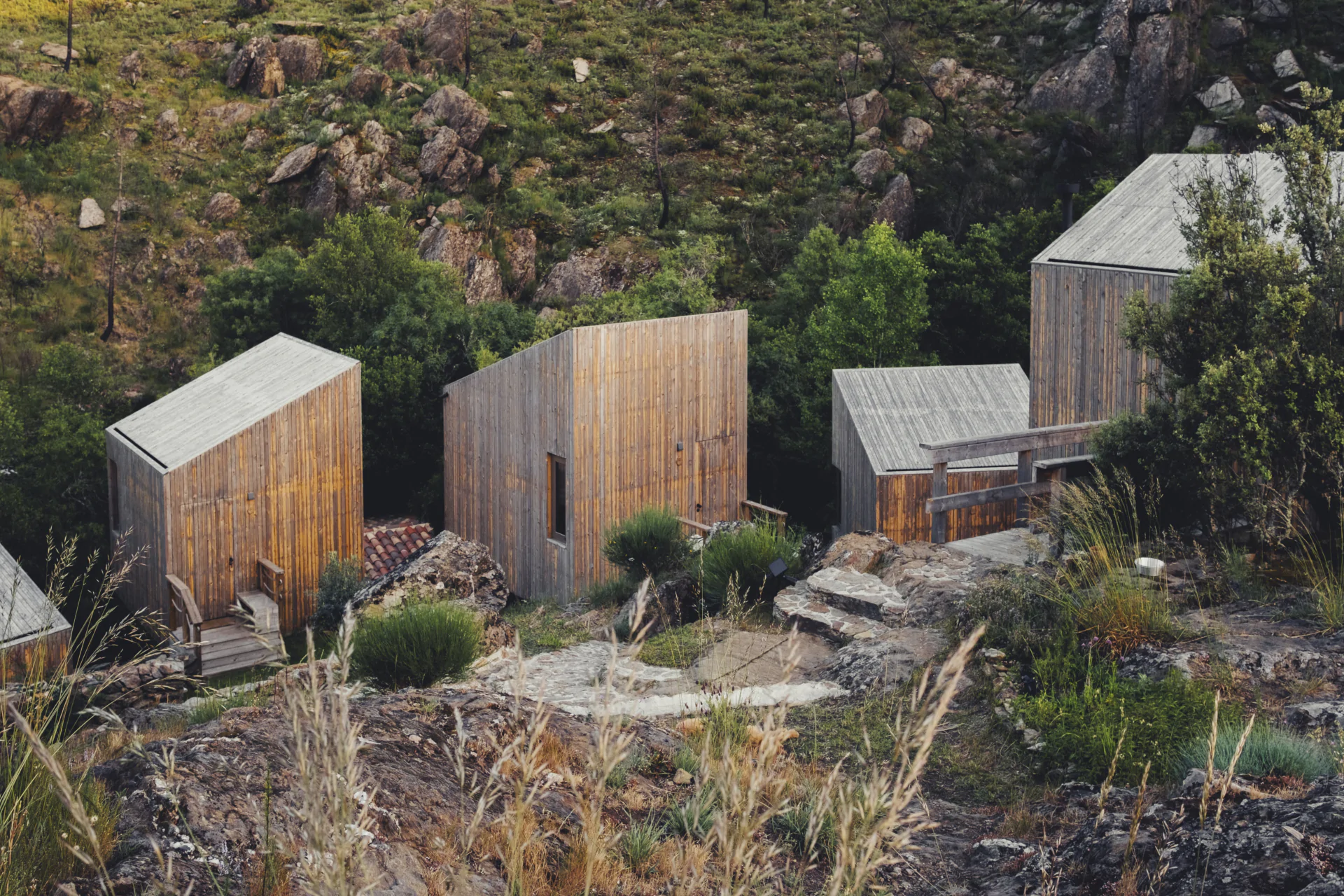
This past summer, I visited a hidden gem in northern Portugal: Tinhela 610, a retreat nestled deep in the Trás-os-Montes, approximately 130 km from Porto.
Travelling with my dear friend, Ana Fernandes, we set off with excitement, her car guided by Google Maps. The GPS insisted that our destination lay down a dirt road, by a solitary fountain in the middle of the mountain.
As we reached what appeared to be the end of the road, Ana and I found ourselves surrounded by nothing but trees.
Expecting to be lost, I called Holly Niemela, the owner of Tinhela 610. To our surprise, we were exactly where we needed to be. Minutes later, Holly greeted us warmly and led us down a narrow path until the first signs of the retreat emerged from the greenery.

We were taken into the kitchen of the retreat, being welcomed with kombucha and fresh water from the fountain. There was no rush, unlike so many of the other stories I worked on.
Holly was patient, and looked into our eyes intently, as if studying us for a minute.
She then took us around the property.
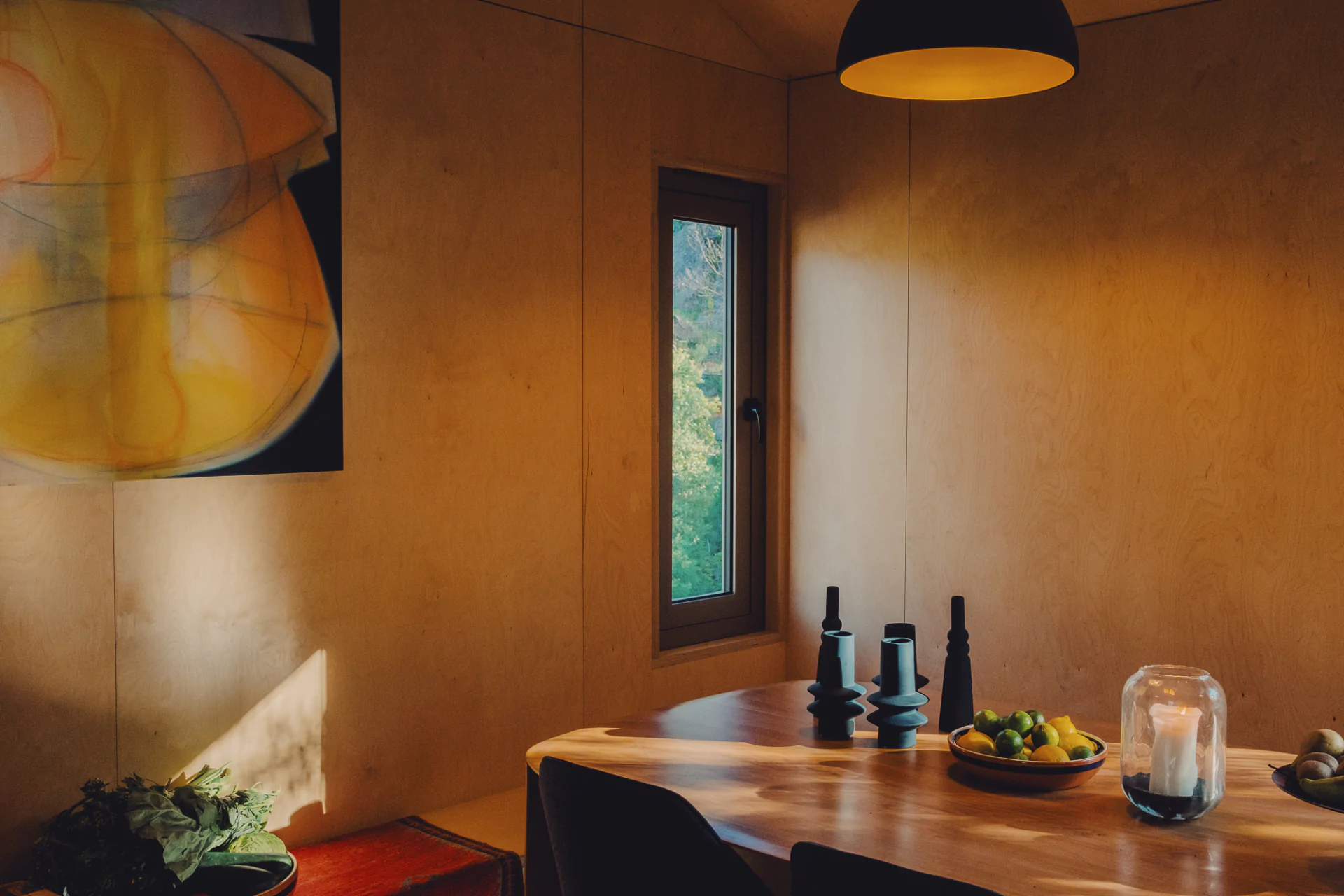
At Tinhela 610, nature takes center stage. A river runs through the land, carving waterfalls between the rocks and forming serene pools for guests to enjoy. The retreat offers yoga, meditation, Pilates, and qi gong classes led by Holly and her partner Edouard Payen. It’s easy to get lost in the place’s tranquility — there are hiking trails, river baths, and hammocks scattered throughout the grounds.

Each guest, upon arriving, is given a soap bar. I fell in love with its sculptural quality, and the vibrant colours.

The huts of Tinhela 610 are Scandinavian-inspired, a minimalist yet comfortable place that blend seamlessly with the natural surroundings.
Designed by Rebelo de Andrade and developed by WeStudio, these wooden structures feature large windows, creating a direct connection to the surrounding valley and river. Positioned in perfect harmony with nature, it was impossible not to feel attuned to the rhythms of the earth that surrounded the bedrooms.
Check out the M Le Monde story and visit Tinhela 610 website for more.
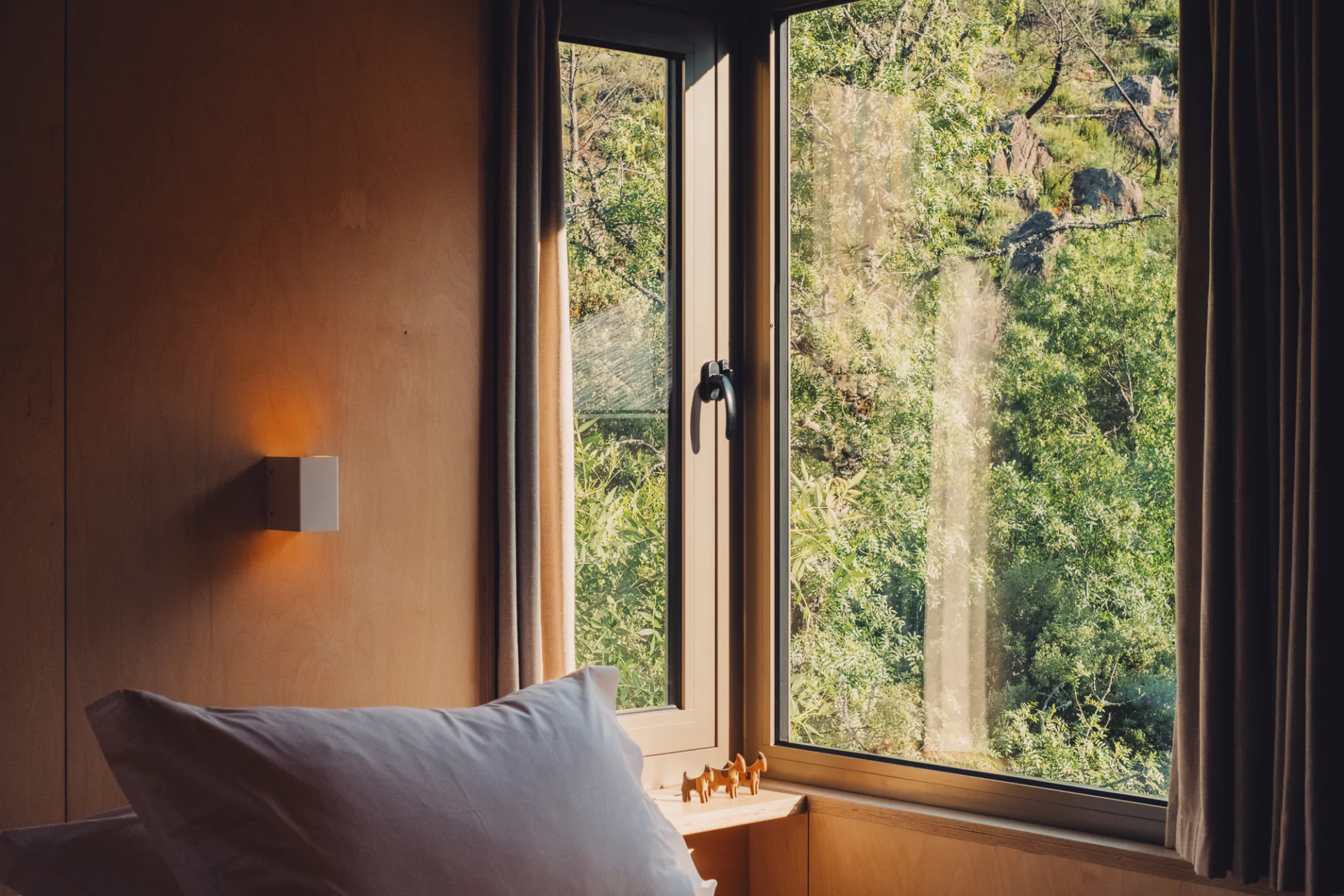
Eduardo Aires Studio Photoshoot for Monocle Issue 174 | Matilde Viegas
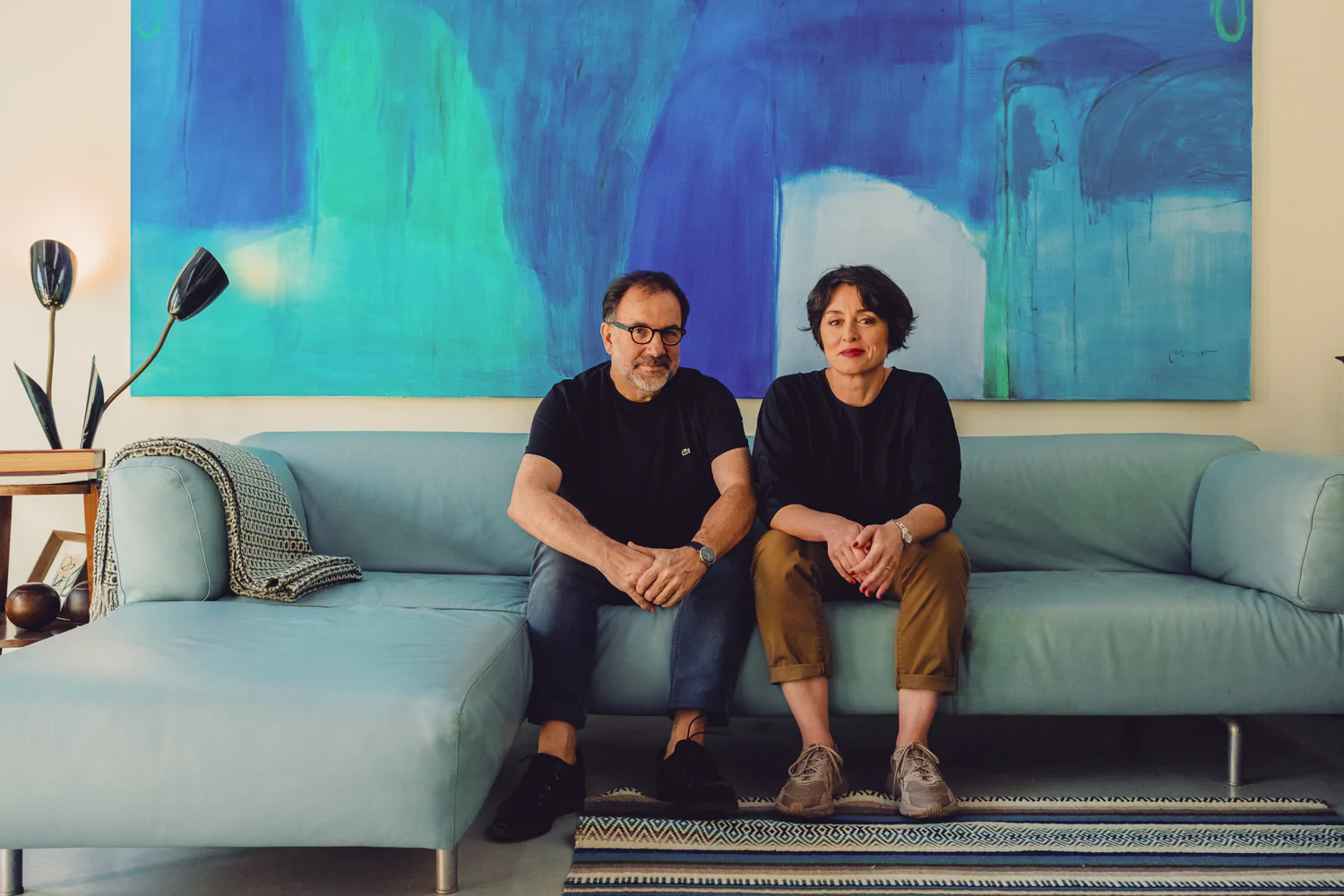
Last spring, Monocle sent me to visit Eduardo Aires Studio, a renowned design studio based in Porto, Portugal. During my visit, I had the opportunity to meet Eduardo Aires (Founder & Art Director) and Helena Sofia Silva (CCO & Creative Director), along with their talented team.
Known for their expertise in visual identity design, the studio’s work seamlessly blends tradition with modernity.
The article, titled “Identity Politics” and written by Carlota Rebelo, delves into Eduardo Aires Studio‘s approach to creating cultural identity design.
Their work shapes the visual representation of cities and institutions, with a focus on precision, clarity, and storytelling.
A prime example is their widely acclaimed rebranding of Porto’s visual identity, which has had a profound impact on the city’s public spaces. Most recently, the Studio made the headlines with their Portugal government logo.
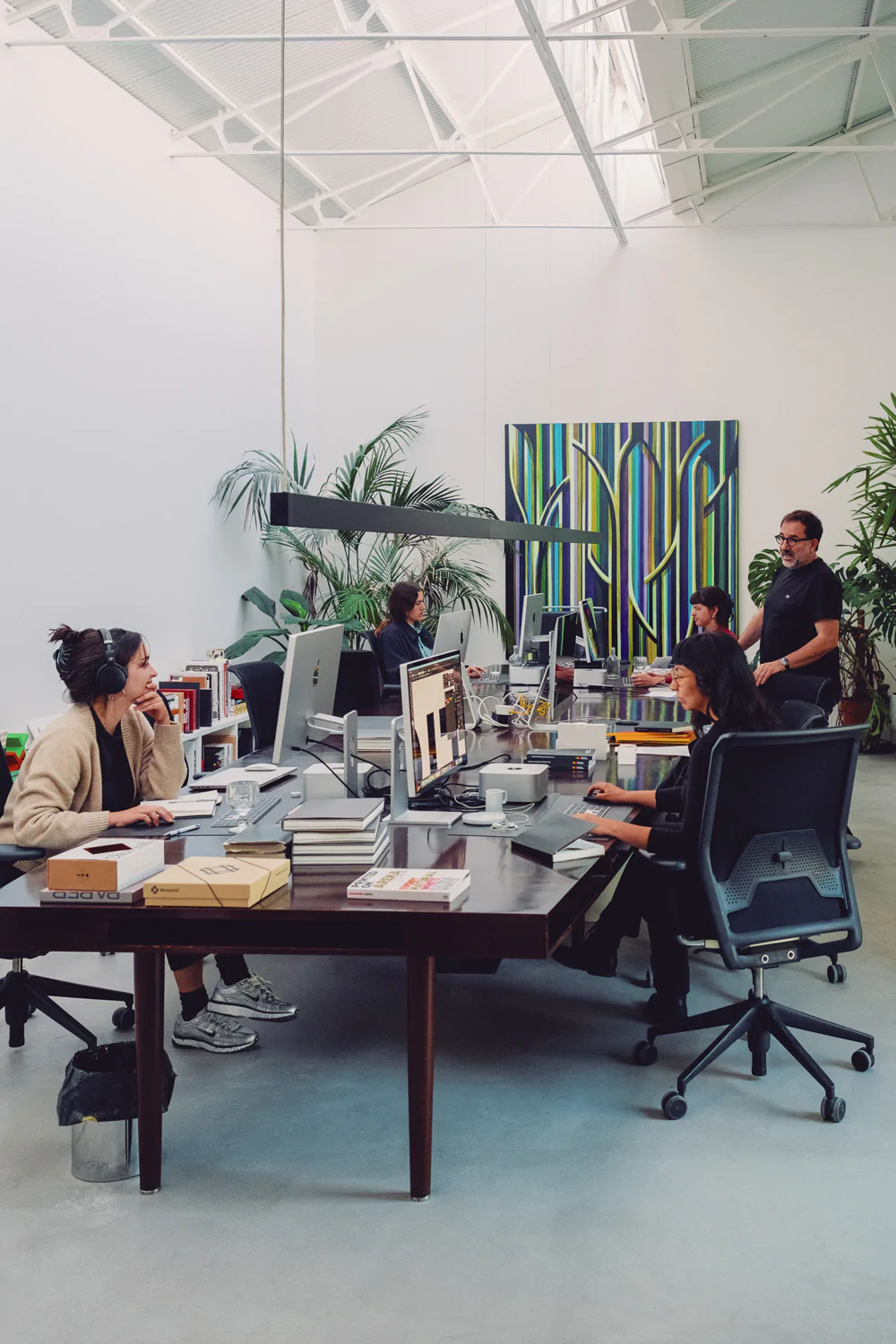
Behind the Scenes with Eduardo Aires Studio
For this feature in Monocle Issue 174, my role was to photograph the design process at the studio. On editorial assignments like this, my goal to connect with the team by having individual conversations and learning about their creative flow.
I find that asking them about their mental process and reviewing their notebooks together helps me better understand how to document their work in a more personal way.

Capturing the essence of a place requires balancing close-up moments with wider shots to give a complete visual narrative.
Oscillating between photographing just over their shoulder or from 10 meters behind is important to create a dynamic portrait of a place.
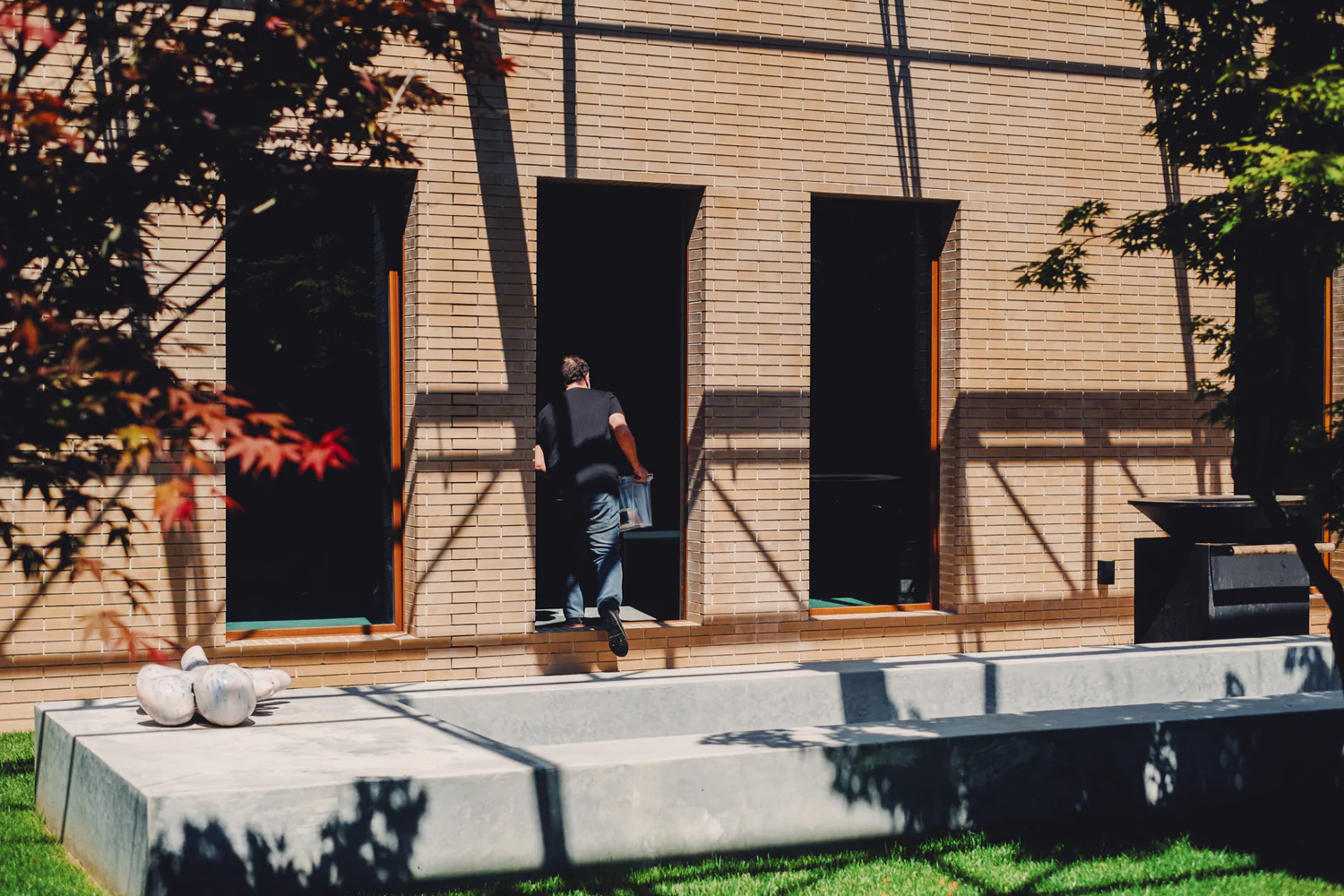
But most importantly, I take time to be in their space, by myself. To scan the shelves and surface for personal mementos. Making a photo is so much more than just framing something and pressing the shutter.
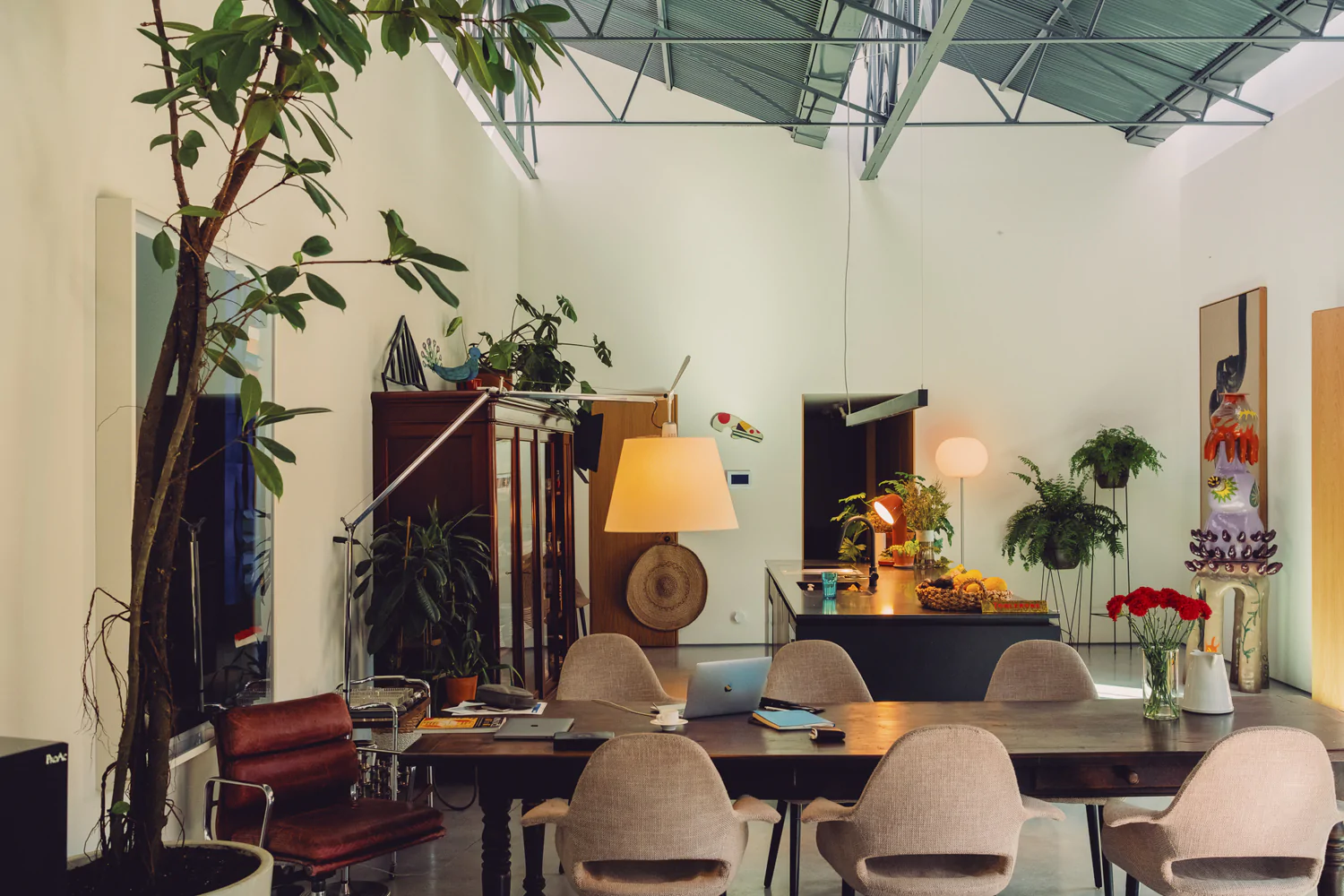
Spending time in their space alone, I focused on finding personal mementos that tell a deeper story. Photography, to me, is about much more than composition—it’s about observing, connecting, and creating a dynamic portrait of a creative environment.
→ Read the full feature in Monocle here, or check out my previous photoshoot with another Portugal-based creative, Iva Viana.
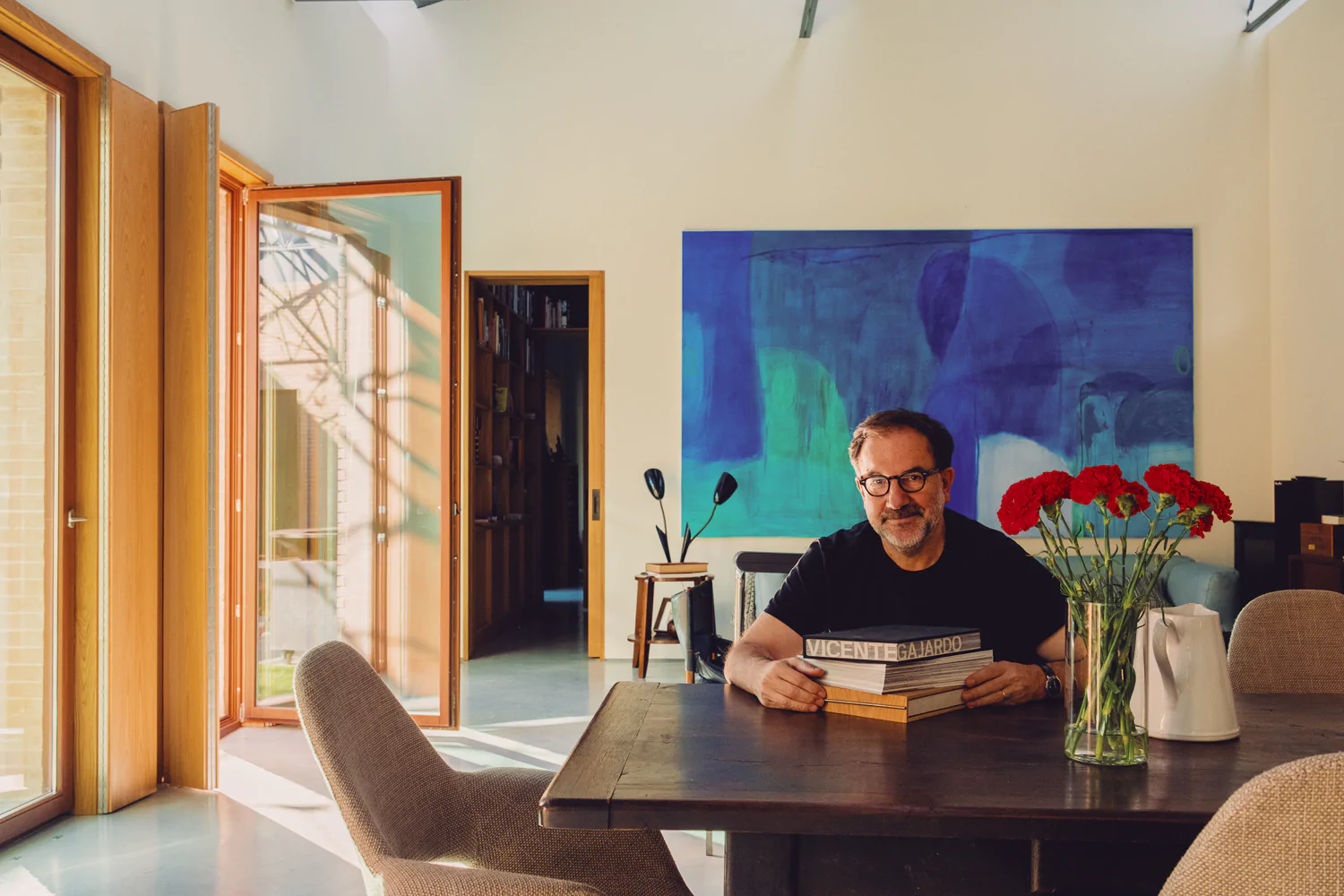
Exploring the Enduring Pottery Tradition in Beringel, Portugal: A Glimpse into António Mestre’s Craft
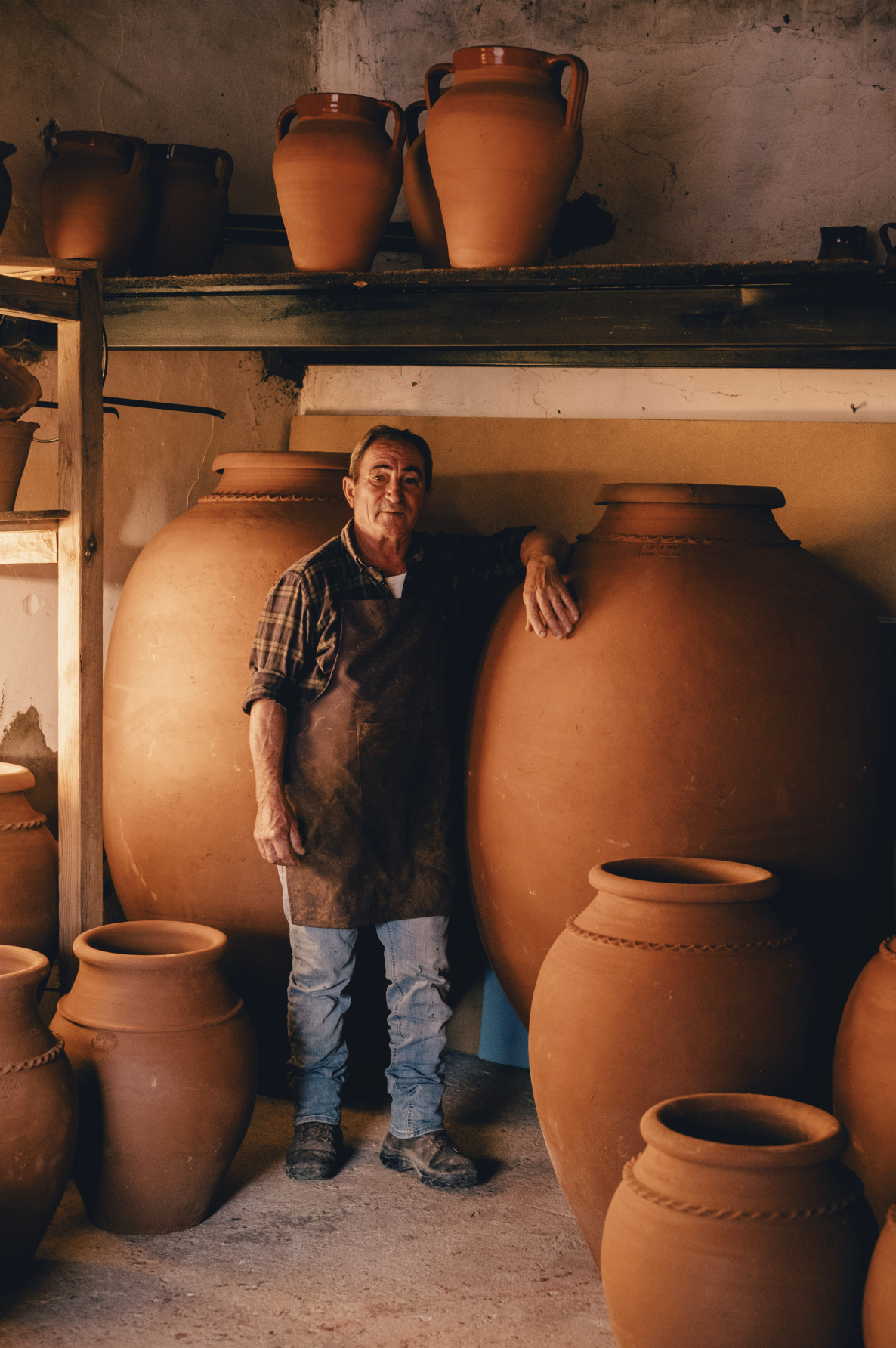
Pottery Tradition in Beringel, Portugal
Beringel, Portugal, is a beautiful example of the enduring pottery tradition in the country. This small village, nestled in the Beja municipality, is steeped in history, with the Cultural Centre showcasing centuries-old pottery techniques and stories from the region’s artisans.
António Mestre: Master Potter of Beringel
One of these artisans is António Mestre, a master potter who continues to use the methods passed down through his family. António is one of the few remaining potters in Portugal who handcrafts wine amphorae from start to finish. He mines and processes the raw clay himself, built his workshop, and even designed his own potter’s wheel. His dedication is truly inspiring, as he creates towering vessels up to two meters tall, firing them in a wood kiln he built by hand.
The Craft of Wine Amphorae
Although António has shared his knowledge with others, the art of making wine amphorae remains a deeply personal craft for him. He worries that few will have the passion and commitment to carry on this demanding work.
A Day with António: Discovering His Passion for Pigeon Racing
I spent time with António, learning about his craft and his life, and I was surprised to find out about his love for pigeon racing! It was an unexpected and delightful discovery.
GEO France Feature: Capturing the Heart of Portuguese Pottery
My photographs and his story were featured in the issue n. 543 of GEO France, capturing the heart and soul of his work. If you’re interested in traditional Portuguese pottery, this feature is a must-read!
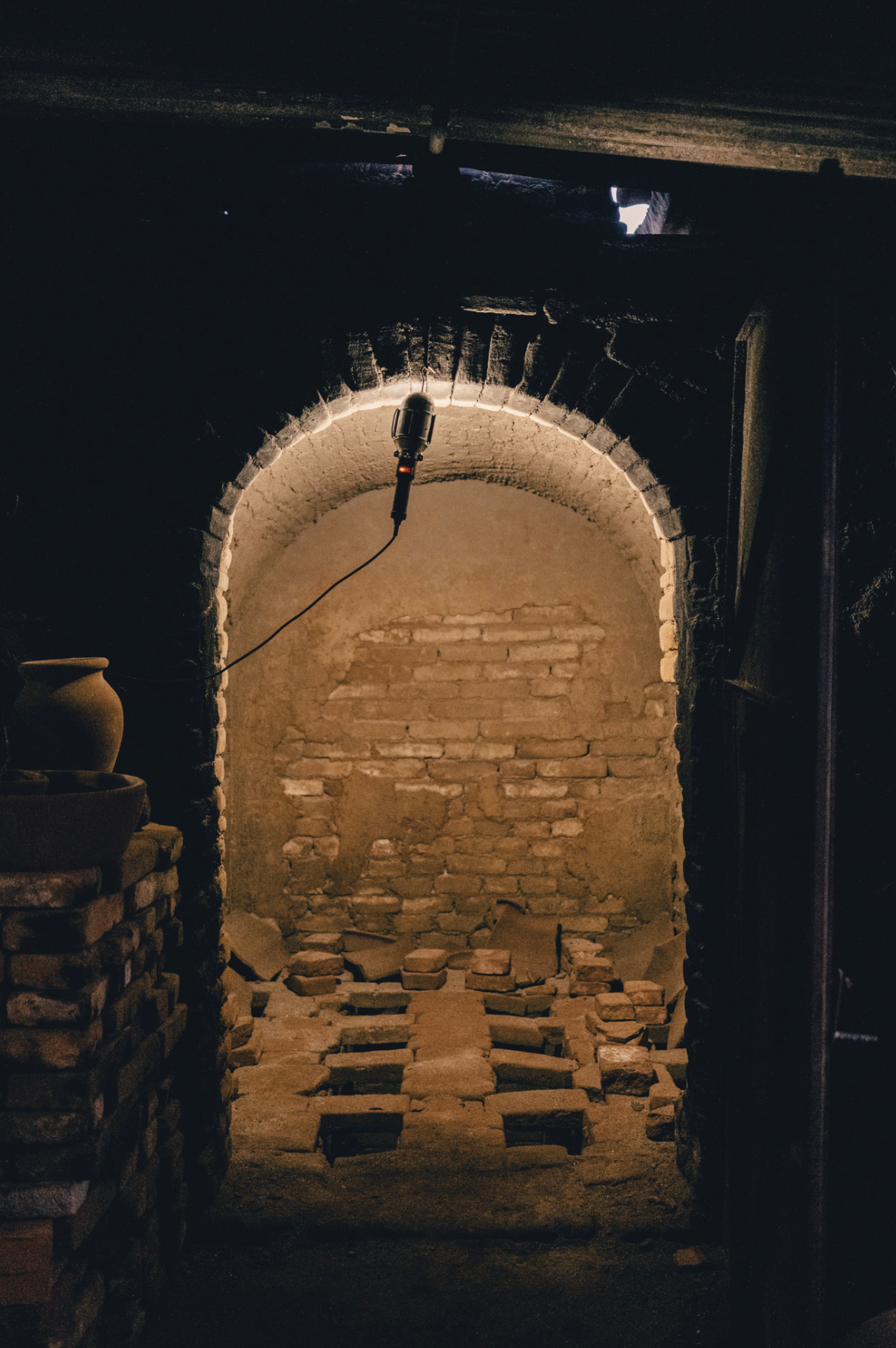




Finding My Voice Through Writing — My Newsletter
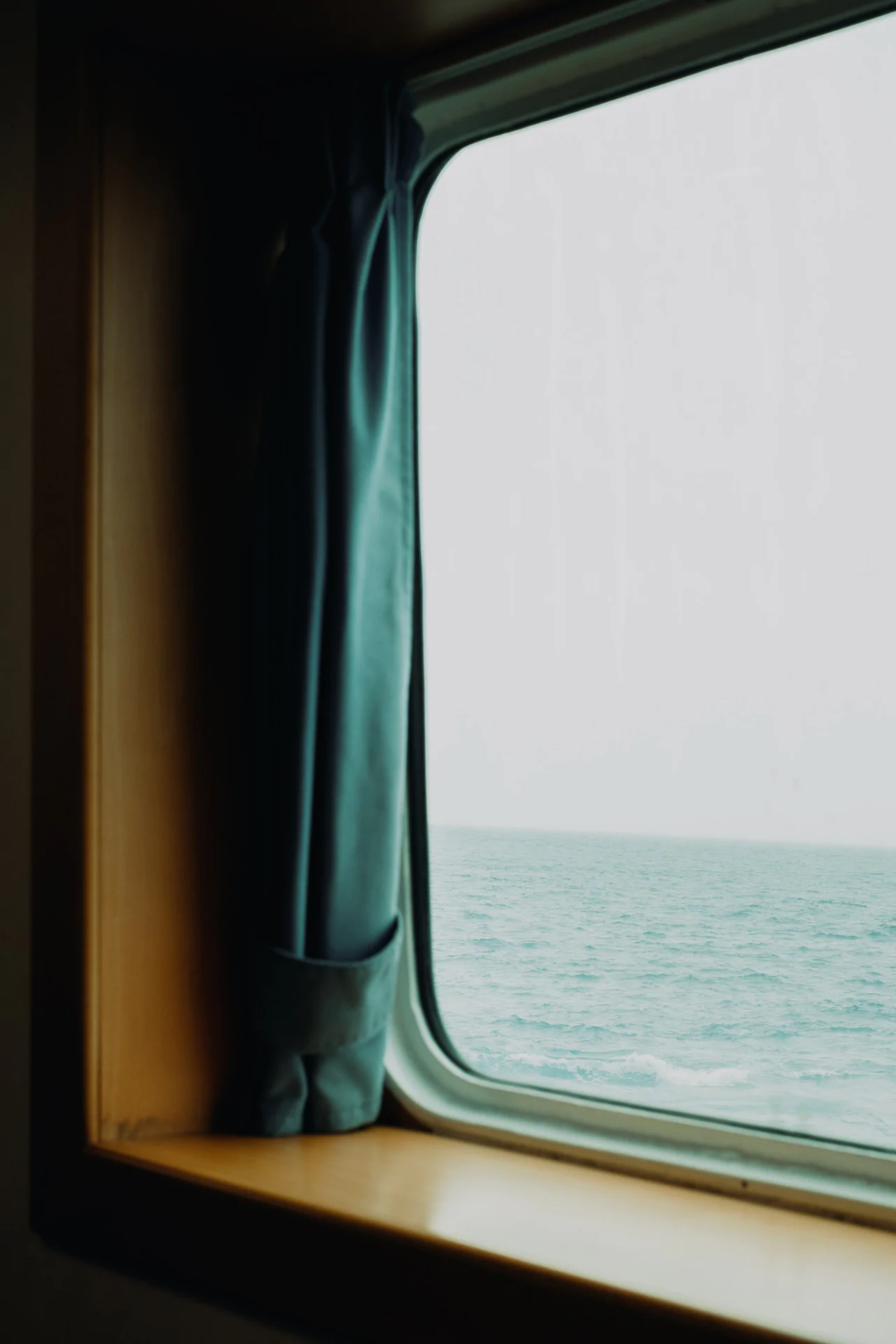
During the pandemic, I began writing structured newsletters, featuring photobooks and answering your questions. I was happy to be finding my voice in writing. But over time, I started to crave the freedom to write in whatever form felt right. So, I let go of the rigid sections and began to write more freely, following my thoughts wherever they led.
Now, writing has become a space where I share what’s on my mind, reflect on my experiences, and explore the lessons I’ve learned.
If you’re looking for inspiration or a fresh perspective on the creative process, I’ve got you covered! Explore some of my favorite issues below:
— Issue #2: On long-term projects and realising our parents are more than just parents.
— Issue #4: On Nan Goldin and finding the motivation to keep going.
— Issue #5: Transitioning from a day job into a full time career in photography.
—Issue #10: On representation and the transformative power of photobooks.
— Issue #11: What I wish I knew before starting out.
— Issue #14: Advice for building a great website.
— Issue #16: Bolo-Rei, curiosity and the importance of questioning.
— Issue #17: On trusting yourself, no matter what.
Check out the links and dive in!
The Art of Jewelry Making: My Latest Work for The New York Times

I’ve always been intrigued by the world of jewellers—how they spend their days peering through microscopes, wielding flaming tools, and carefully handling precious stones. In mt latest work for The New York Times feature, I met Rosior Jewels, a family of jewellers and artisans dedicated to the art of jewellery and one of a kind creations.
In late March, The New York Times sent me to capture how this magic happens.
Walking into their bustling workshop, with its dark blue walls, I was immediately drawn into a vibrant world of endless creativity. It all begins with plasticine, a putty-like material similar to Play-Doh.
Graça, the designer, works by touch, molding and shaping her ideas into tangible forms, experimenting with color and texture as she goes.
Hernani, the goldsmith, then takes these designs and transforms them into gold, meticulously crafting each piece to perfection. Finally, the stonecutter, Luís, adds the finishing touches, setting the jewels with precision and care.
This project allowed me to delve into the artistry and dedication that goes into every piece they create. You can see the full story in The New York Times here: The New York Times: Rosior Jewellery.
Graça tests the orientation of each of the pieces that go into the design.

Hernani replicates the plasticine model.
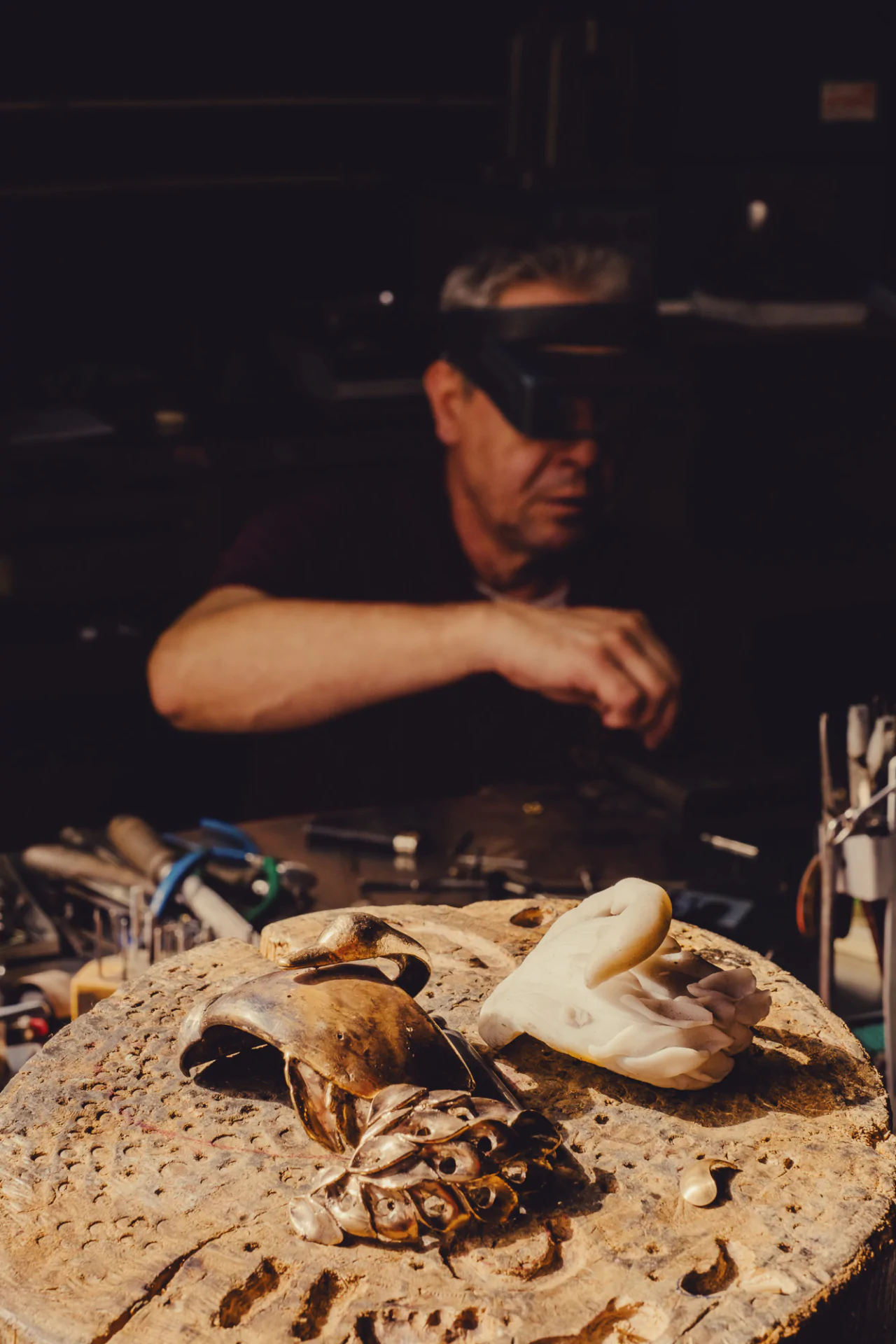
Finished pieces photographed at Rosior Workshop.

Flaming tools to melt the gold.
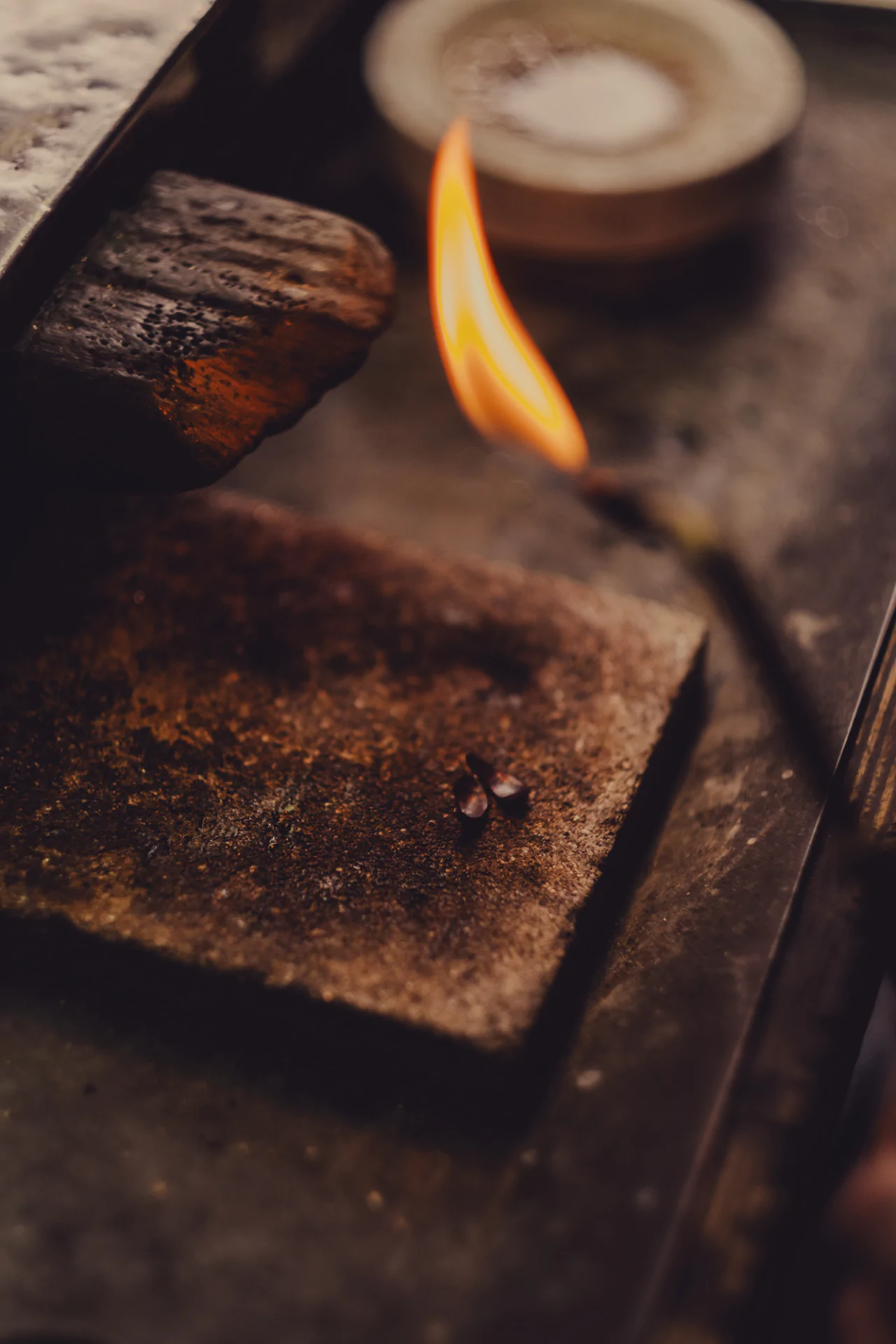
Stonesetter Luís setting diamonds using a microscope.

The view through the microscope, through which Luís looks to apply and set the diamonds.

The plasticine model, sketches and final piece.
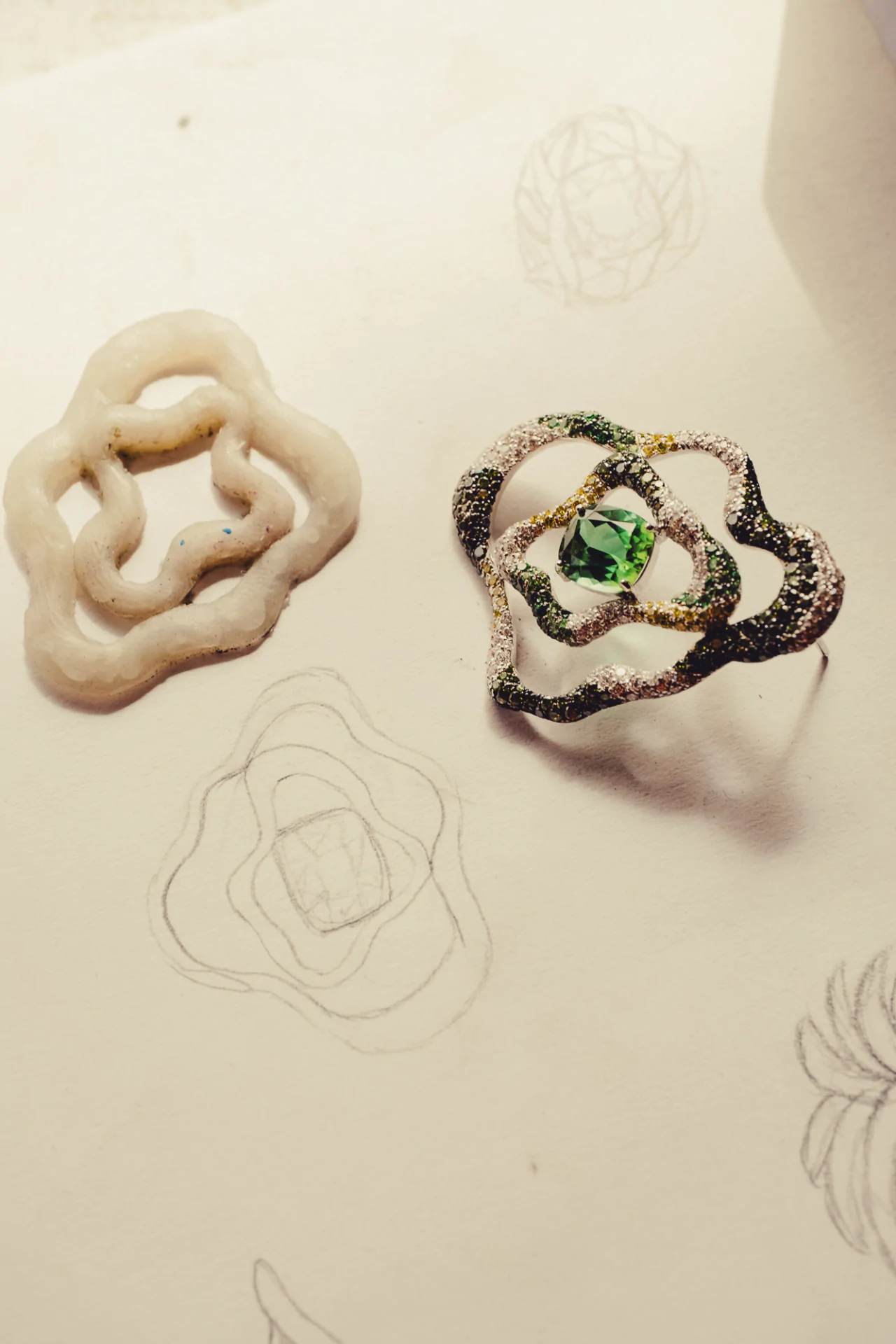
Photographing the Carnation Revolution for Le Monde: A Tribute to Portugal’s Historic Day
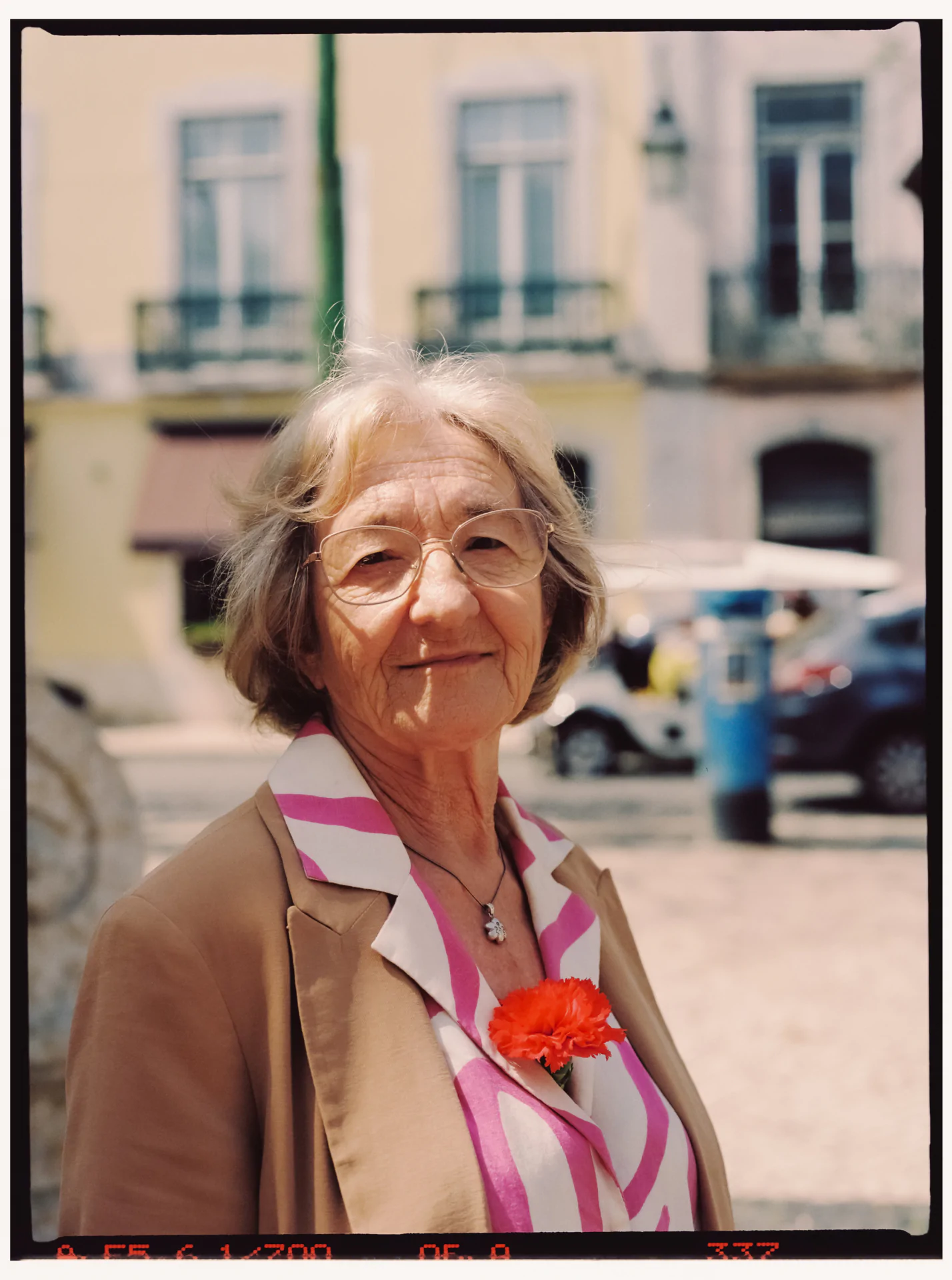
In late April, I had the honor of working on a special project for Le Monde that celebrated the 50th anniversary of the Carnation Revolution. This landmark event, which ended decades of dictatorship in Portugal, is vividly remembered through its powerful celebrations across the country, a reinvigorating the collective spirit.
Throughout Portugal, carnations, a national symbol of the revolution, appeared everywhere—from cafés and building facades to people’s pockets. These flowers represent the spirit and the power of peaceful change.
Le Monde commissioned me to capture the essence of this historic celebration by photographing three key figures from the Carnation Revolution:
— Natércia Salgueiro Maia, widow of Captain Salgueiro Maia, who played a critical role in the revolution.
— Colonel Vasco Lourenço, whose strategic planning within the military was instrumental.
— Journalist Adelino Gomes, who reported live on April 25th, 1974, documenting the revolution as it unfolded.
During this week, the iconic song “Grândola Vila Morena” resonated throughout Lisbon. This song, which served as the revolutionary anthem, symbolizes the call for unity and the drive for transformation that marked the beginning of a new era in Portugal.
Capturing these moments was a deeply meaningful experience. Listening to Grândola Vila Morena, its rhythms echoing across town, reminding us on the enduring significance of the Carnation Revolution and its impact on Portugal’s journey towards democracy.
As I met the people responsible for the Revolution that defined my life, I couldn’t stop myself from crying with gratitude for their willingness to dream of a different future.
Read more at Le Monde, words by Raphaëlle Rérolle.
Captions:
1: Portrait of Natércia Salgueiro Maia, widow of Captain Salgueiro Maia, who played a critical role in the revolution.
2: View of Largo do Carmo, where the Carnation Revolution took place in April 25th, 1974.
3: Adelino Gomes, the Journalist that reported and broadcasted the Revolution live on the radio.
4: Archive photograph of Salazar’s portrait behind removed by the Military after the Revolution.
5: Colonel Vasco Lourenço, one of the militaries responsible for the Revolution.
6: A bouquet of fifty Carnations as a symbol of the 50th Anniversary of the 25 de Abril.




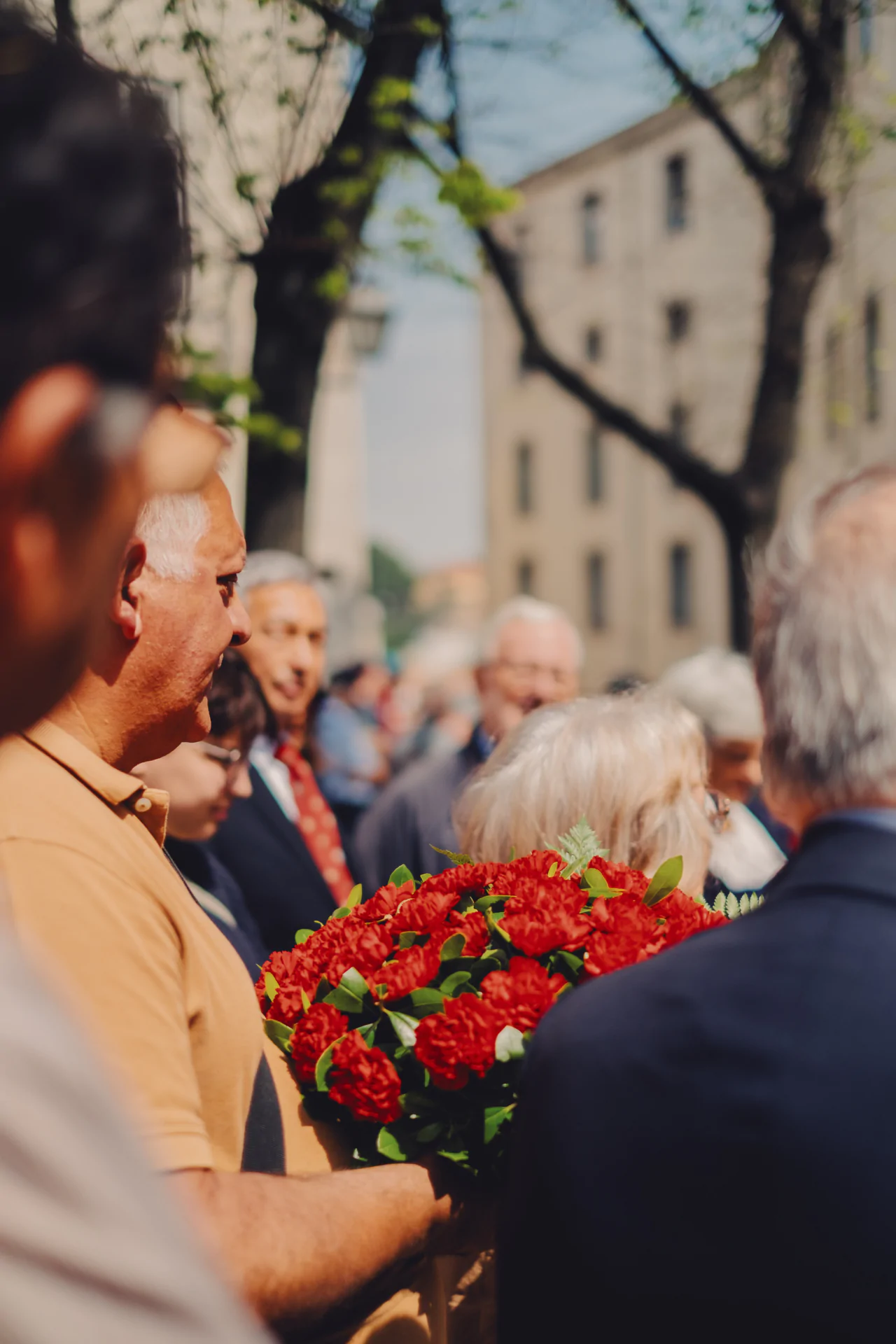
10 things I wish I knew before starting out as a Freelance Photographer
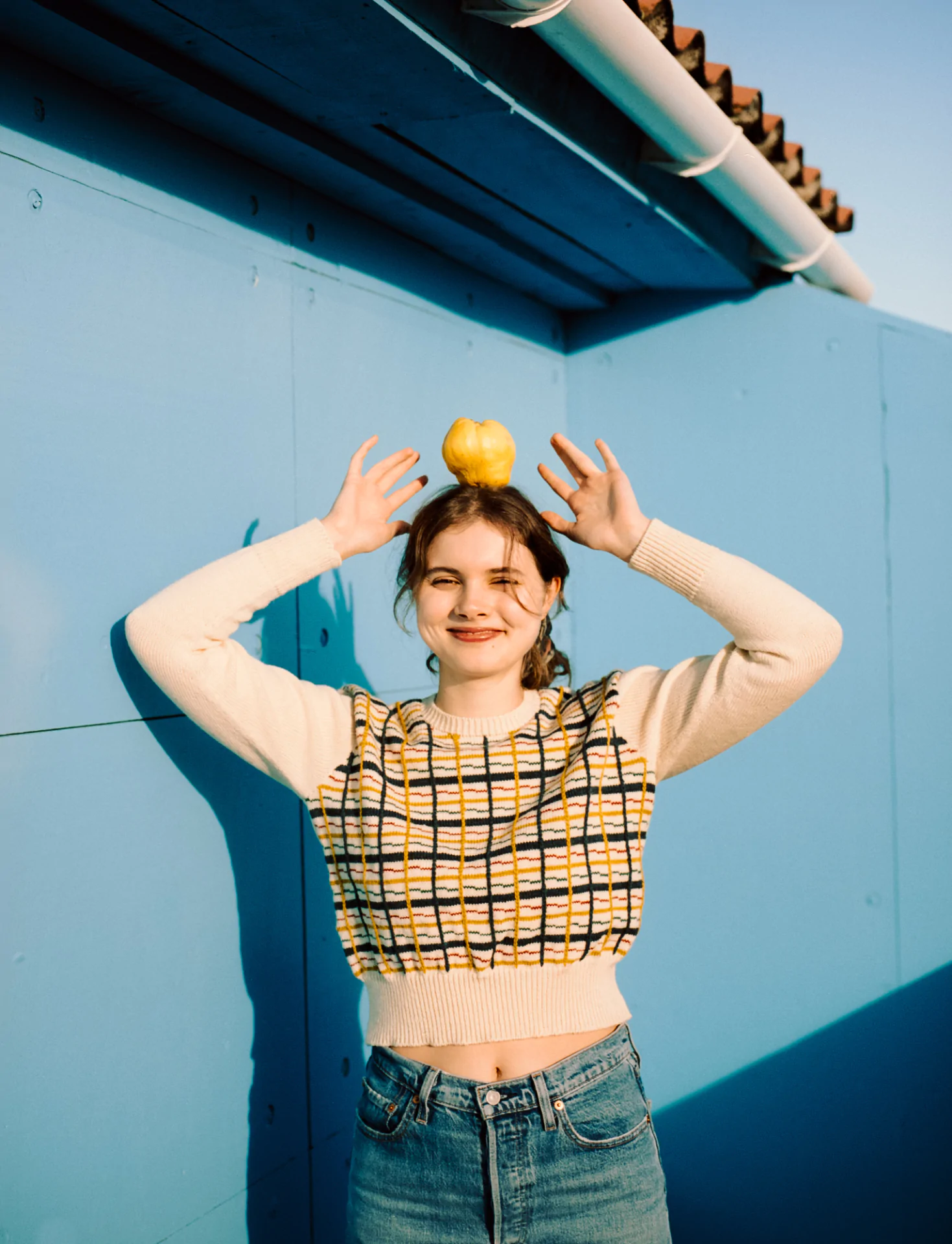
Starting a career as a freelance photographer can be overwhelming. Over the past 14 years, I’ve learned some hard lessons that I wish someone had shared with me when I first began. Here’s a list of 10 insights that might help you on your own journey:
1. Start simple. One camera and one lens are enough. For an entire decade, 90% of my work was made with a single 50mm lens. This allowed me to focus on everything else besides the gear while learning to use the camera as an extension of myself.
2. You don’t need to study photography to be a successful photographer. Big news! You don’t need to study photography to succeed. Pursuing other interests and skills can enrich your work in unexpected ways. Embrace diverse experiences—they’ll benefit your creative journey. Go ahead and study something else besides photography, broaden your horizons. I assure you those skills will come in handy.
3. Aim to be in as many diverse situations as you possibly can. This will teach you boundaries, how to work with discomfort, it will test your skills, and it will clearly tell you what you like and don’t like. Learning to say no is also an essential skill.
4. You’re not working for that shiny magazine cover, you’re building an archive. With everyone else sharing their work and successes online, it’s easy to lose track of what you want. When you feel lost, tune in. Write your values down in post-it notes and keep them nearby so you can revisit them when needed. As time passes and you keep making photographs, you’ll be creating a meaningful work. Your archive will tell a powerful story over time.
5. Surround yourself with people who support you and your work. Being an artist is an extremely vulnerable job. There’s a lot of self-judgement and doubt involved, plus you’ll have to deal with others’ opinions of your work. Take criticism with a grain of salt while nurturing the relationships that make you feel good and valued. Find your support network!
6. Have a life besides photography. I know how obvious this may sound but for the sake of your sanity and health, please, have a life besides photography. Having goals that don’t depend on your work as a photographer will offer you a sense of control. There’s joy to be had in life, don’t forget that. Strive for balance.
7. Look after your body. Keep it clean, fully-functioning and moisturised. I remember years ago Michelle Groskopf told me she started weight lifting so she could better endure the long hours of work as a street photographer. I took her advice and began strength training. And now I’m telling you to do the same – work!
8. Have a uniform for work. I learned this from Anastasia Taylor-Lind who packs the same items of clothing every time she travels for work. Even though I’m not a war photographer like Anastasia, I like to think of practicality and comfort whenever I dress or pack for your work. I assure you don’t want your crisp white shirt getting in the way of making your best work.
9. Give back. Show appreciation to those who’ve been in front of your camera. Share your work with them and offer personal touches. A simple hug or a heartfelt gesture can mean a lot.
10. Don’t be afraid to support others. Despite what we’re told, there’s plenty of room for all of us in the industry. Collaborate, make friends who are also photographers, share your shortcomings, talk about money, ask stuff. Help each other out – that’s how everyone wins.
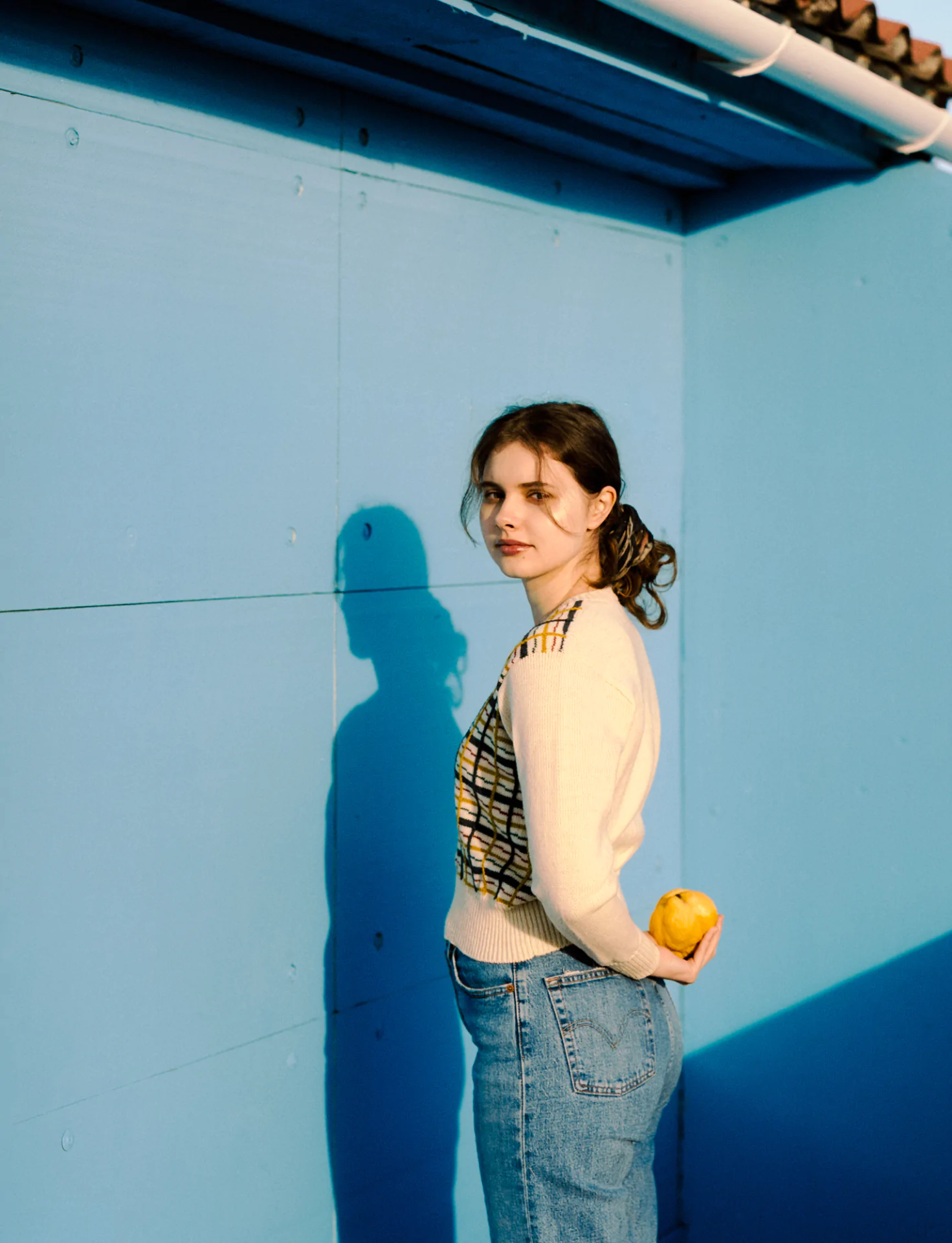
My Domestika Course “Intimate Photography: Capture Emotive Portraits”

For so long I wanted to share with you what I learned over the years. I had planned to one day start doing workshops but they all have limitations – budget, travel, timings, etc – that led me to always question myself: is it really the best medium? Should I instead become a teacher? Do occasional masterclasses=
Mid-July 2021, Domestika reached out to me with a proposal: you can teach whatever you want, and we’ll produce it.
For over a year, I researched, wrote scripts for each of the lessons, listed all of the actionable advice I could think of for being a freelancer, and dug deep into my library for the books that have been pillars in my creative path.
Fast forward to September 2022, I flew to their studios in Madrid and began a week of recording classes, sharing my favorite photobooks, and photographing while in a room with a 15 people crew behind me.
The end result is my course “Intimate Photography: Capture Emotive Portraits” – 2 hours split into 14 classes, plus 20 resources (references, links and pdfs) to help you along your journey. The course is built around a “study case”: I plan a session with a couple (the beautiful Lola and Claret) at their home, with their two lovely cats.
It’s been so special to read your reviews and seeing the reach of photography. The feedback has been so incredible and I can’t thank you all enough for it!
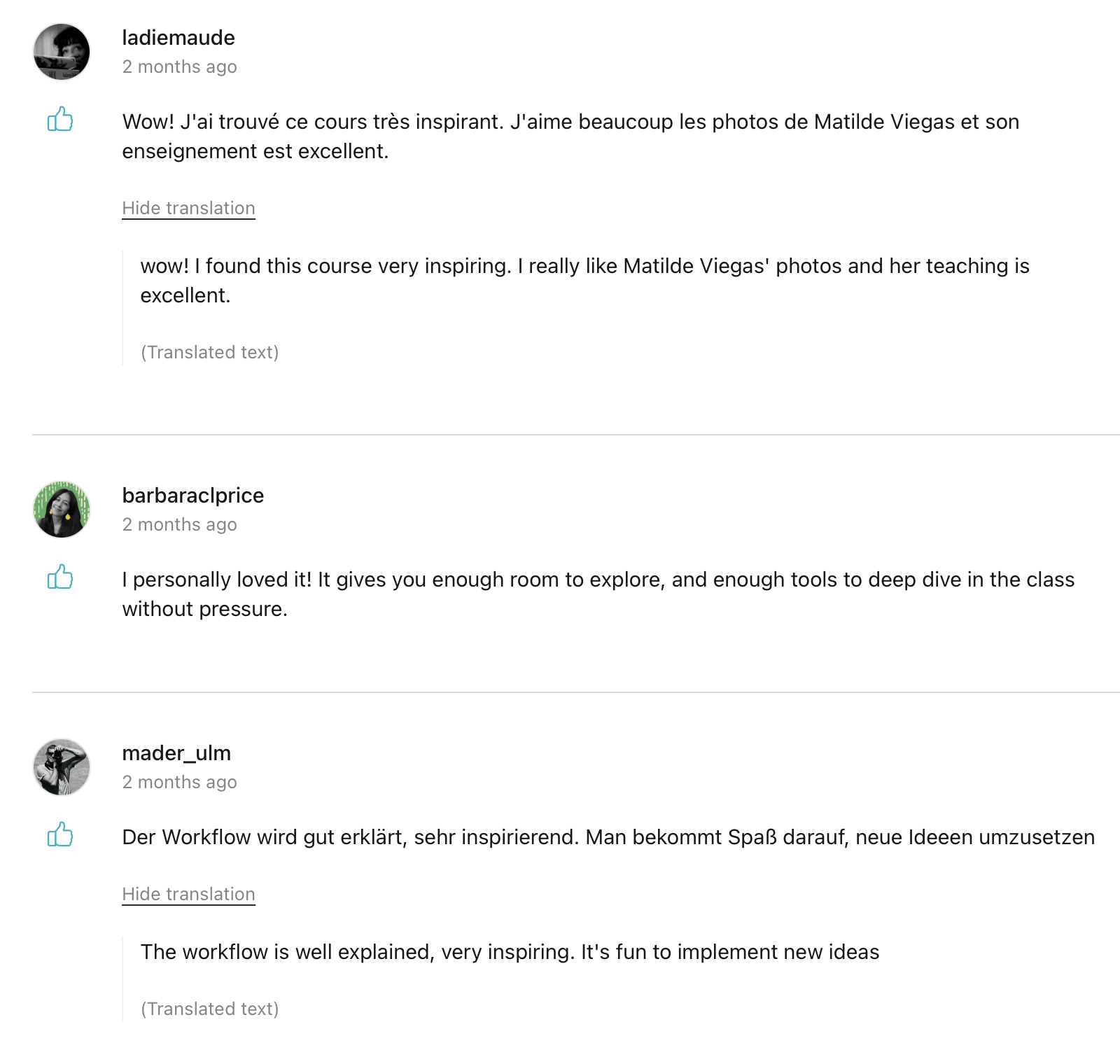
A Farm in Southern Portugal photographed with the Hasselblad
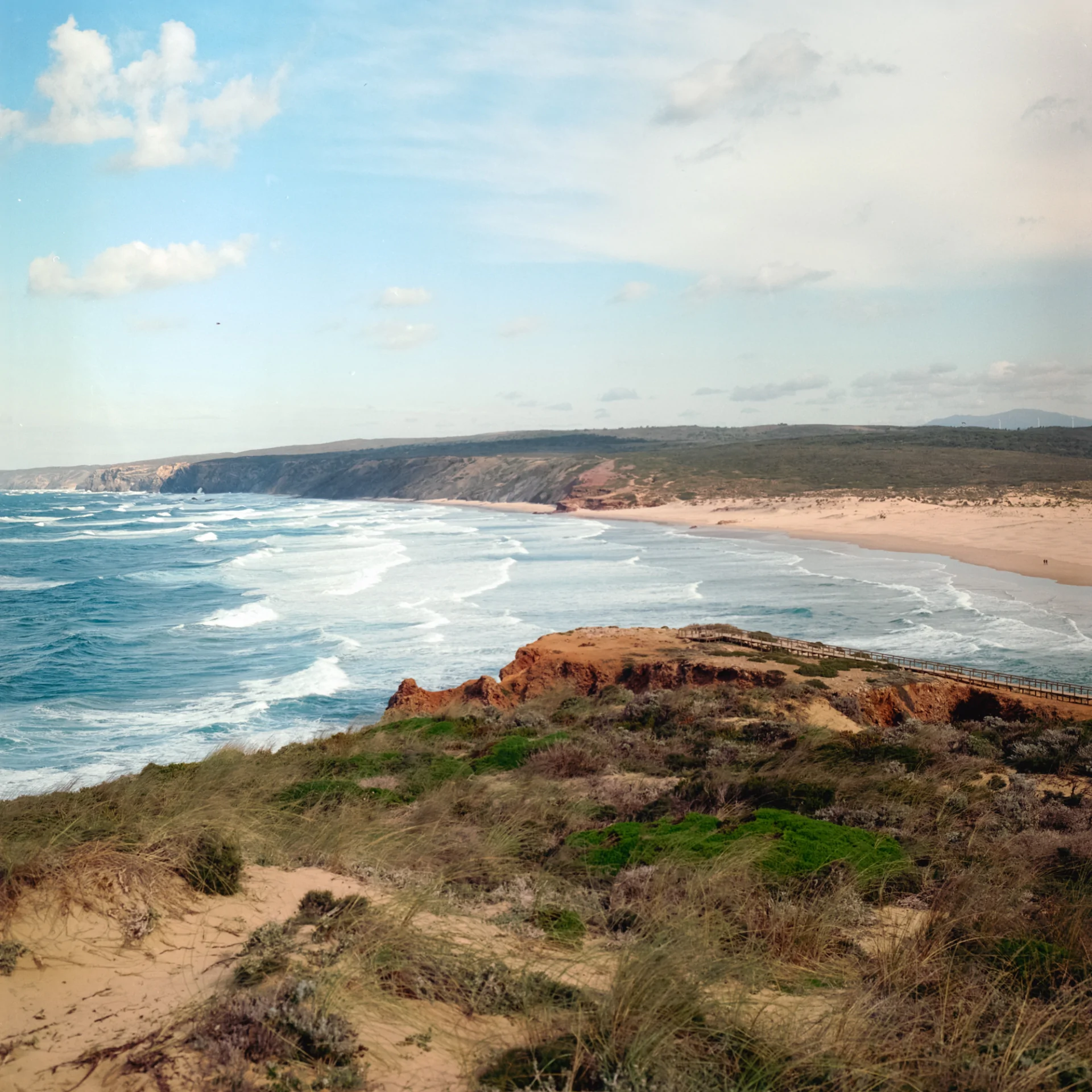
In January 2021, the photo editor Lara Huck sent me on assignment to Southern Portugal for Die Zeit. On a whim, I packed my medium format Hasselblad camera at the last minute.
I was tasked with photographing the wilderness of the landscape, where land meets the Atlantic Ocean, and an emerging group of individuals who were involved in preserving the land while promoting a sustainable approach to agricultural and eco tourism in Algarve.
In one of our stops, we met Nídia, a woman who runs a farm all by herself.
There are chickens, hogs, cats, geese and horses, no fences to be seen which means that the animals are free to roam. Nídia believes we must not “own” anything or anyone, and the same applies to the animals she cares for.
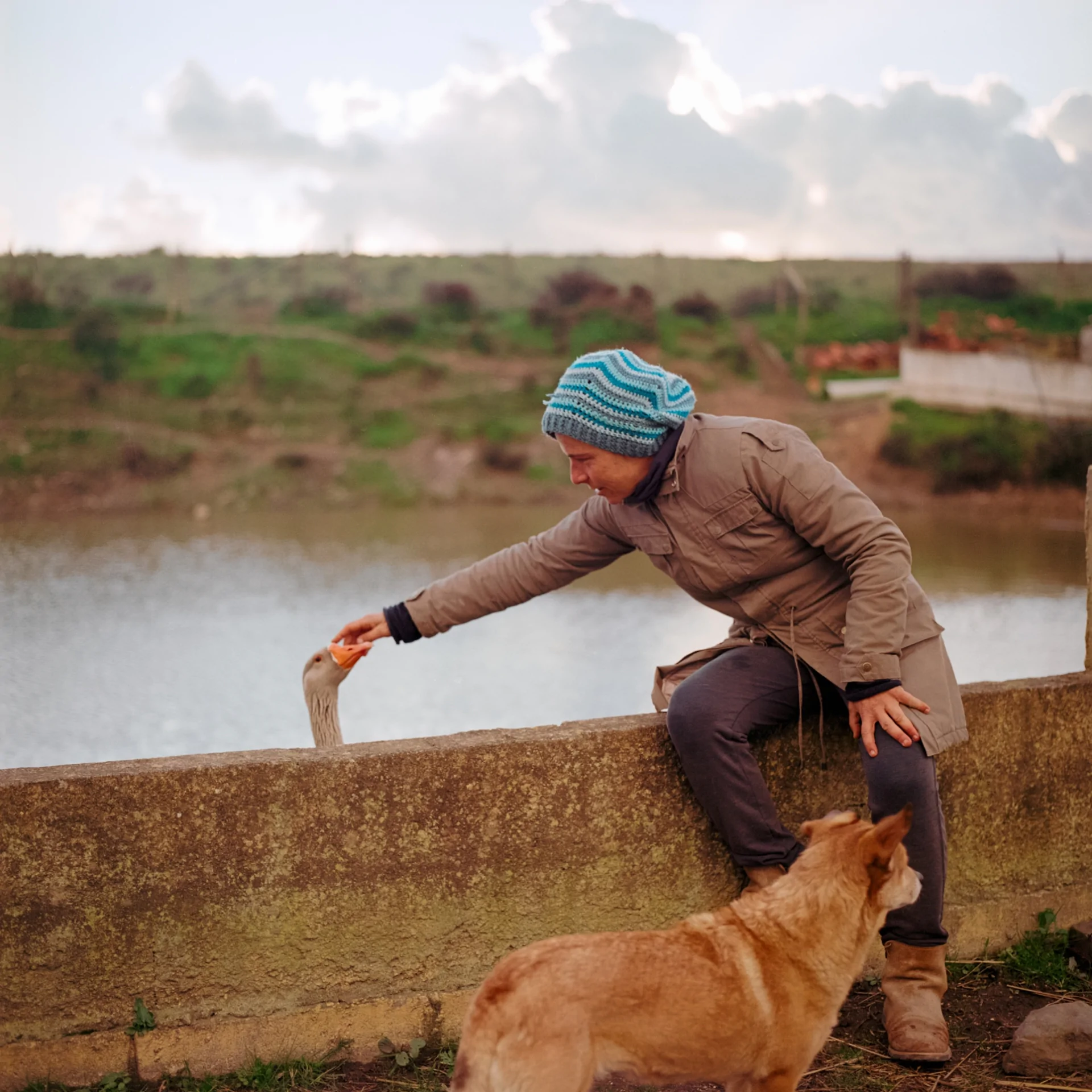
One of her sows made her way to a nearby park and has lived there ever since. Passersby stop by to feed it.
It’s given birth to nine hogs who now live there too. This family has become the park’s landmark, and every single day someone will show up with food for them. There is even a Facebook group about them, I was told. When I visited the park, I saw this woman, phone in hand, filming the hogs as they feasted on the food she had just brought.
